Join us for the first academic walkthrough of our exhibition programme as we welcome Marco Bohr, Associate Professor in Design and Digital Art at Nottingham School of Art & Design.
This event marks the beginning of a series of short, informal, academic-led talks and tours of the Bonington Gallery exhibition programme. These sessions provide our academic colleagues with an opportunity to share insights, spark discussion, and share research that resonates with the themes of our exhibitions.
Marco’s research is concerned with the role that images play in the shaping of a variety of discourses related to politics, gender, identity, sexuality, censorship, ethics and disasters. Drawing on his background as an exhibiting photographer, Marco’s research interest is principally focused on the photographic image — not only as a medium of visual expression but also as a research methodology and a tool for political activism.
Marco’s research interest also extends to visual propaganda, cinema, documentary and essay film. His book “Visual Counterculture in Japan” was recently published by Bloomsbury.
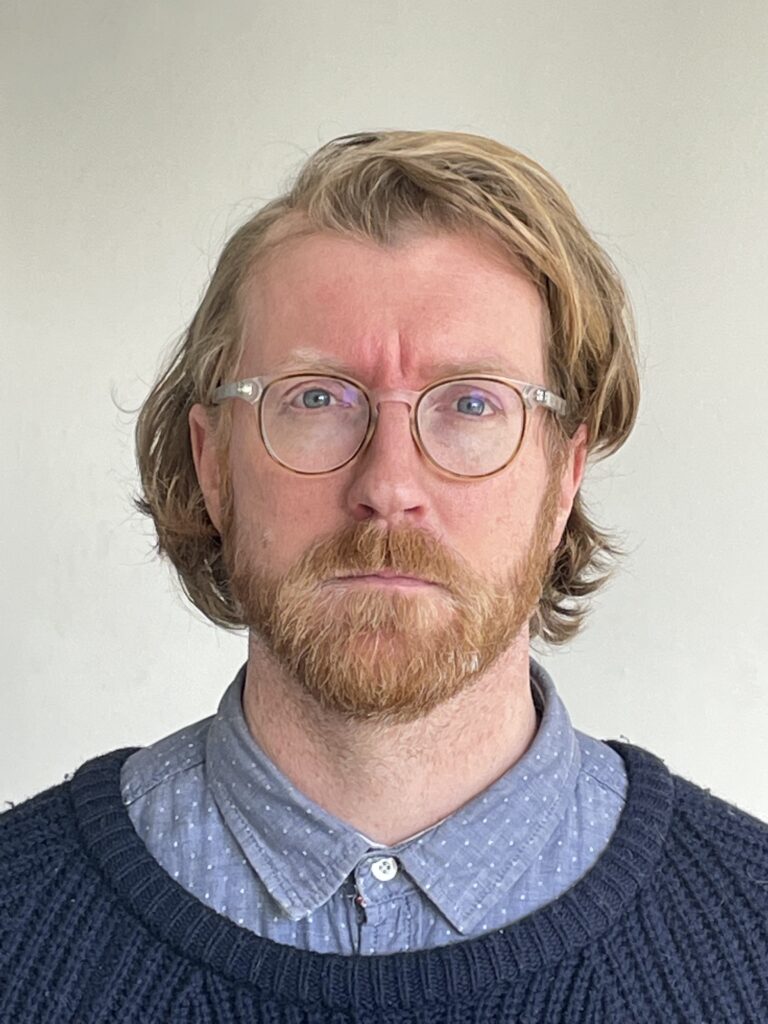
Bonington Gallery presents A Semester in Nottingham, 1976, an exhibition of photographs by Baltimore-based John Dean. Captured during his time as a visiting student to Nottingham Trent University (NTU) in 1976, these photographs offer a powerful glimpse into Nottingham life during a transformative era.
This exhibition marks a poignant return to the institution — formerly Trent Polytechnic — where John studied as a visiting student nearly fifty years ago.
Armed with a camera and a quiet curiosity, John immersed himself in the rhythms of Nottingham life. Over the course of a single semester, he wandered the city’s streets and parks — Hyson Green, Market Square, the Arboretum — capturing striking black-and-white portraits of residents going about their daily lives. The resulting images are both documentary and deeply personal, offering a rare and intimate glimpse into the everyday lives of Nottingham’s people during a transformative era.

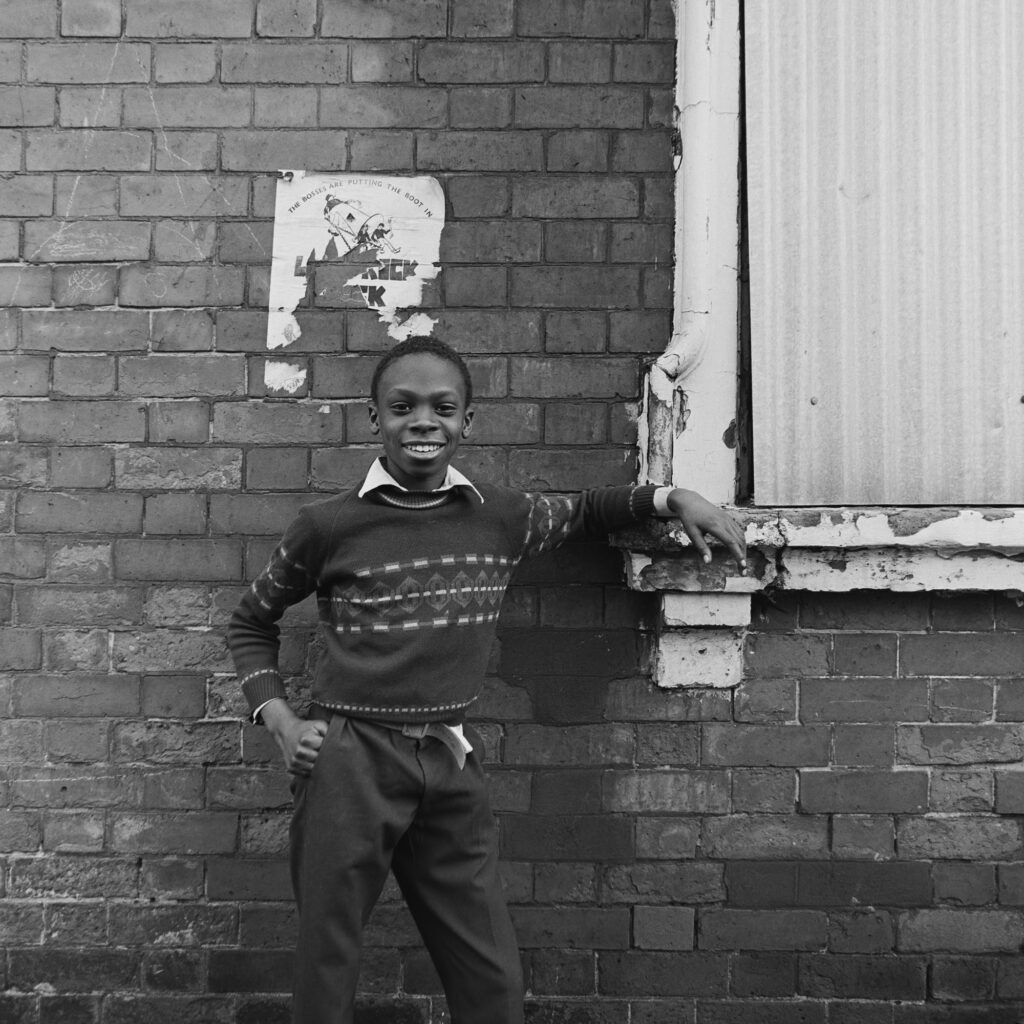
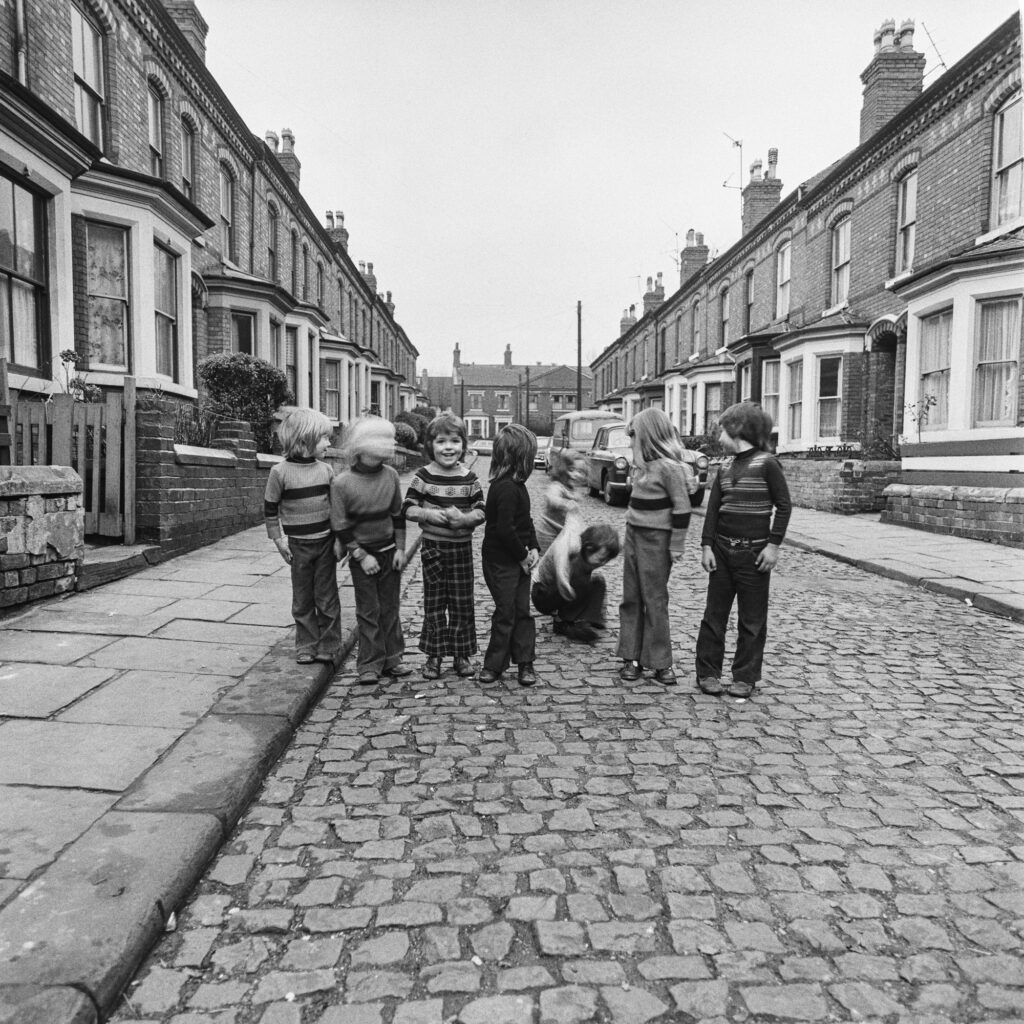
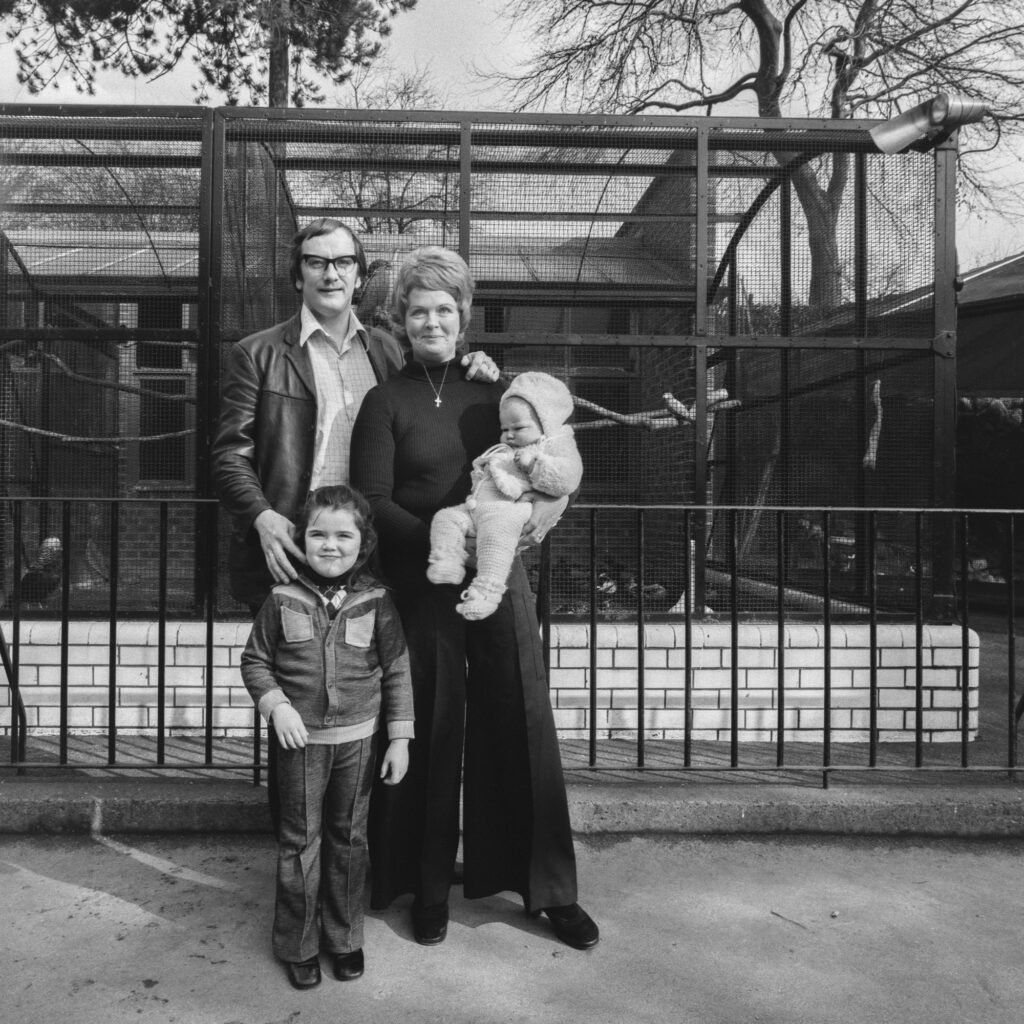
First developed in Trent’s own darkrooms (situated next door to the gallery), these photographs have remained largely unseen for decades. Now, they return to the place of their origin, standing as a testament to the power of observational storytelling, told through the eyes of a visitor to the city.
John has since built a distinguished career as a producer and videographer, creating historical and educational media for museums and non-profit organisations across the United States and beyond. Yet photography remains his first and most enduring creative language — a medium through which he continues to explore the intersections of memory, environment, and human experience.
John Dean is a Baltimore-based photographer, videographer who graduated with a BFA from the Maryland Institute College of Art. He regularly works with museums, non-profit organisations and editorial platforms on the creation of educational and historical media and content.
In addition to institutional work, John’s independent photographic practice has taken him across the world, exploring historic and cultural sites of significance, such as excavation sites in Greece and sacred spaces in Istanbul. As a long time mentor and arts advocate, John is consistently guided by a curiosity for human stories.
Join us for the launch of our latest exhibitions — new film and textile work by multi-disciplinary artist Ibiye Camp, exploring the complex interplay between infrastructure, care, and resilience along the coast of West Africa.
layt de kam critically examines the deployment of temporary power ships along West African coasts as a response to energy shortages. The work reflects both hope and uncertainty, emphasising the fragility of these energy solutions while honouring the resilience of coastal communities.
Accompanying layt de kam in our Vitrines is Through Our Eyes, In Our Words, an exhibition presenting stories of ageing, belonging, and inclusion among middle-aged and older-aged LGBT+ people in Britain.
Enjoy a free welcome drink, delicious food (first come, first served!) and music by multidisciplinary artist Fauzia.
All welcome but reserve your free ticket to avoid disappointment.
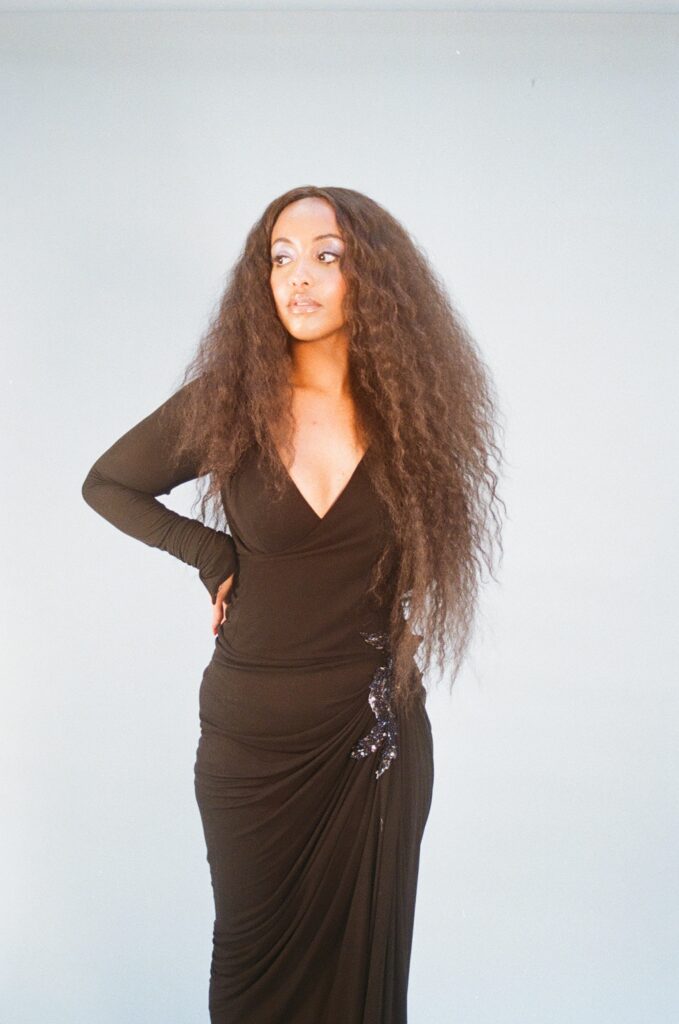
Bonington Gallery is delighted to present Through Our Eyes, In Our Words, an exhibition exploring stories of ageing, belonging, and inclusion among middle-aged and older-aged LGBT+ people in Britain.
What does it mean to belong? To grow older? To feel heard, seen, recognised?
Spanning LGBT+ History Month 2026, this exhibition from the IncludeAge project invites you to engage with the experiences of middle-aged and older-aged LGBT+ people in Britain today. Reflected through photographs, personal objects and testimony, LGBT+ people share what matters to them: the places they love and where they feel seen, and the everyday moments that shape who they are.
These artefacts don’t come from behind a lens held by someone else. They were taken by the people whose stories they tell. Some might identify as artists or creative practitioners, others not. Each photo and object is a choice – of what to show, how to show it, and what it means. Some speak of joy and celebration. Others quietly express frustration or longing—all of them reflect lives lived with strength, humour, creativity, and care.
The IncludeAge project (2022-26) explores experiences of inclusion and exclusion among diverse middle-aged and older aged people (40+), in physical places and online spaces..
The project specifically engages with LGBT+ individuals and people with learning disabilities. Its goal is to build on the insights shared by participants and use them to develop solutions that foster more inclusive communities.
The project is led by Professor Judith Sixsmith at the University of Dundee, in partnership with the University of Hertfordshire, Liverpool John Moores University, and the University of Edinburgh. Several organisations are also involved in the project, including Tonic Housing, Sleeping Giants, and Outside the Box, among others.
At Bonington during LGBT+ History Month 2026, Through Our Eyes / In Our Words showcases the richness of LGBT+ voices, histories, and imagery emerging through the project. Exhibitions elsewhere in the country will showcase material relating to the participants with learning disabilities.
For more information, please contact Dr Richard Vytniorgu (r.vytniorgu@herts.ac.uk).
Photo: Rosie Gardener
Join us for the launch of the first exhibition of the academic year, a two-person exhibition by William English and Sandra Cross bringing together film, photography, sculpture, sound, and archival material formed independently and collaboratively over several decades.
To Farse All Things offers a rare opportunity to explore the intertwined lives and practices of two artists whose work resists categorisation. Through a shared and uncompromising commitment to experimentation, hospitality, and social engagement, English and Cross have cultivated a body of work that is as generous as it is radical.
As part of the 28th instalment of the Bonington Vitrines series, we’re delighted to present Someone’s Doing Something, a project by London-based curatorial, research, and archival platform Gestures, developed in dialogue with writer Isabelle Bucklow.
Enjoy a free welcome drink, delicious food (first come, first served!) and music.
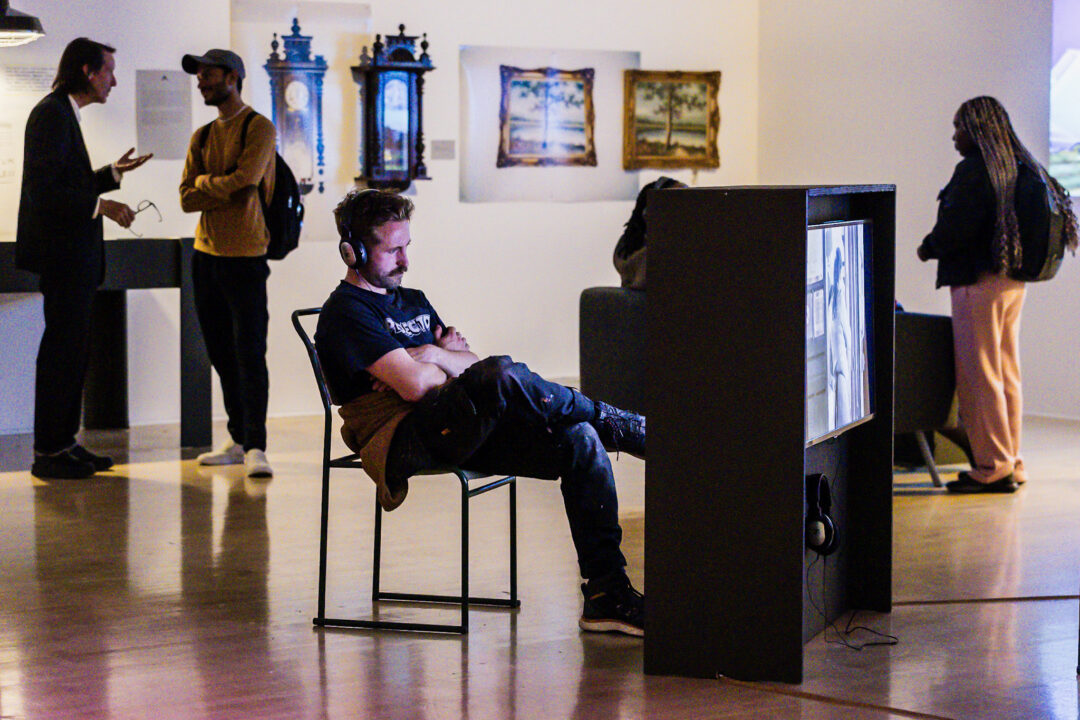


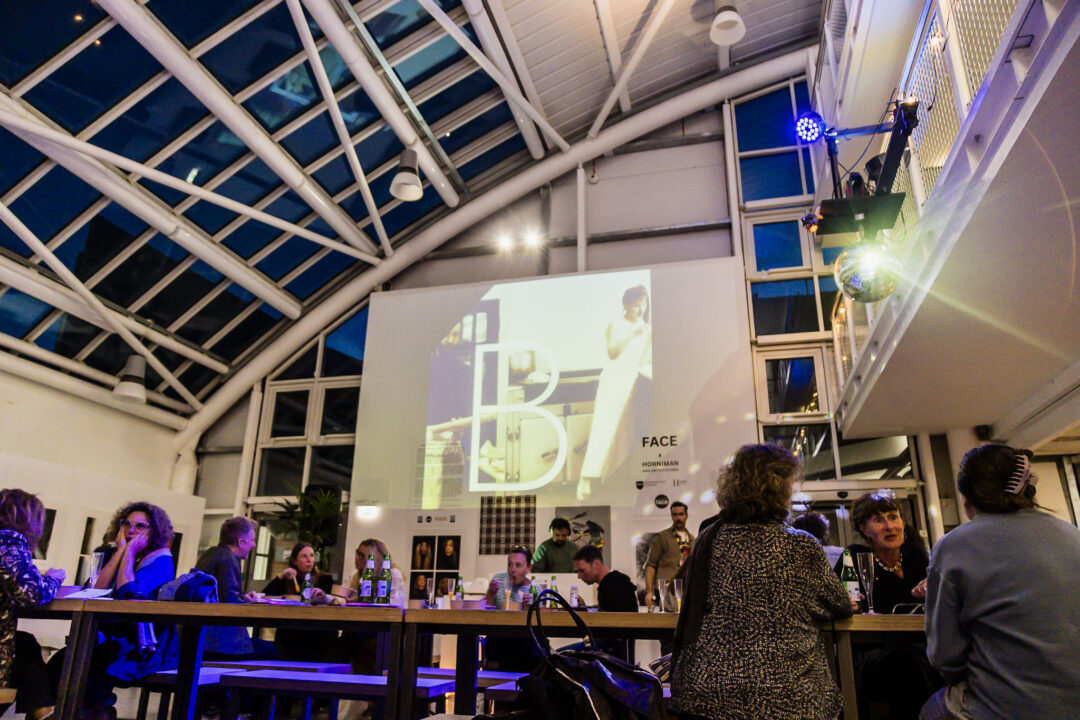
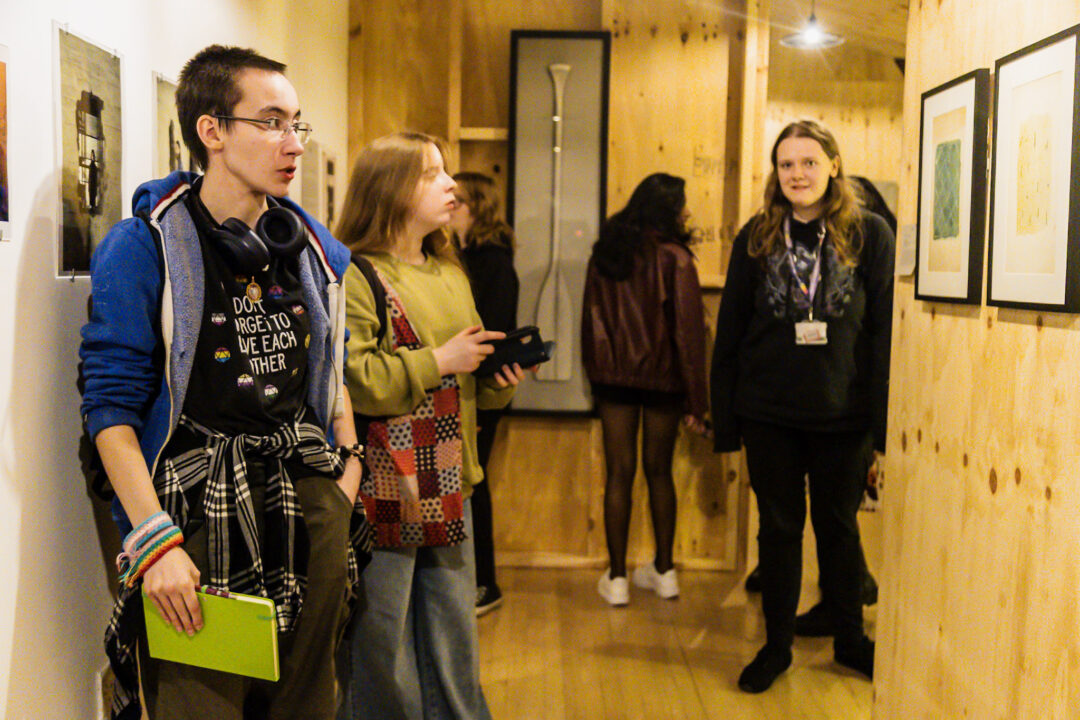
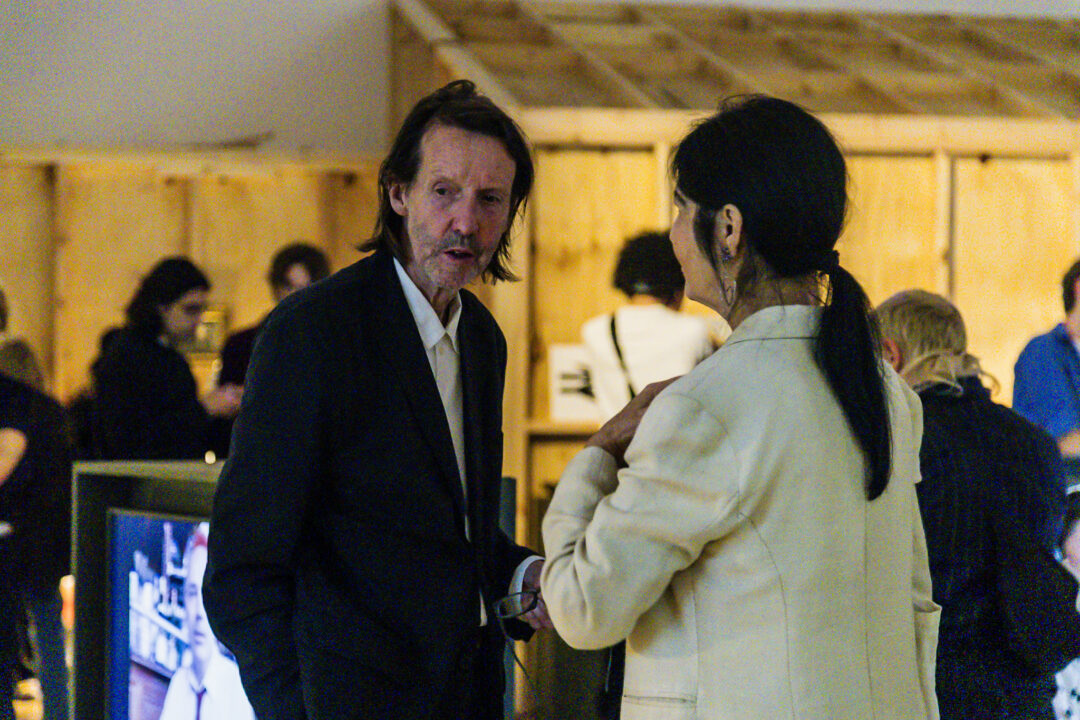


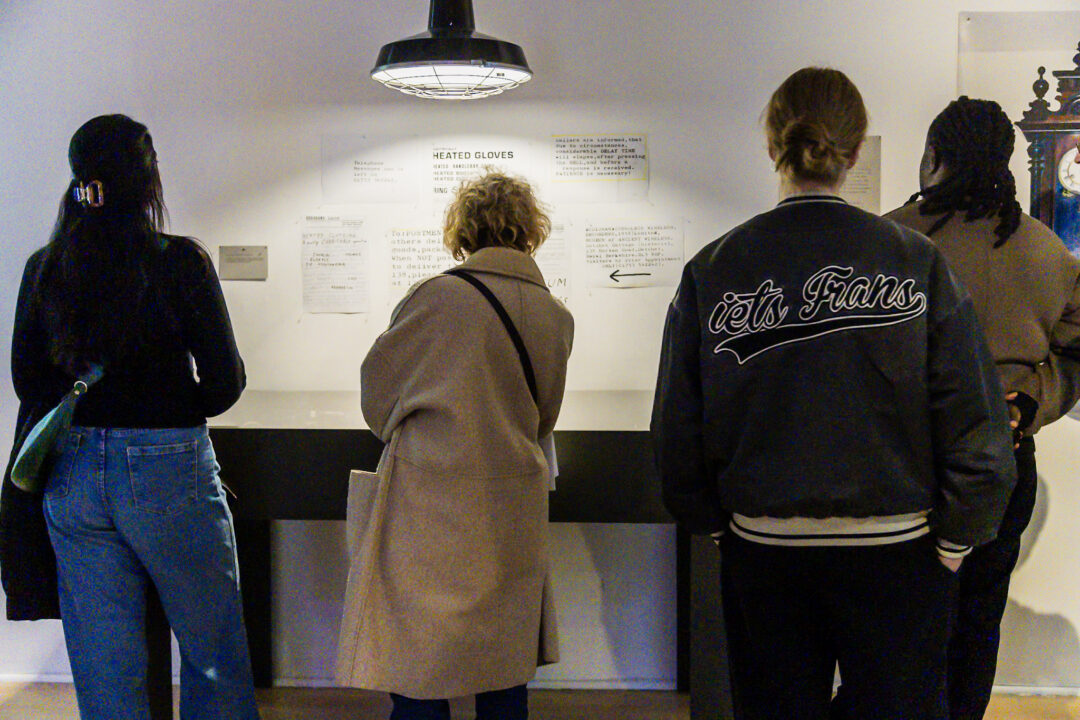


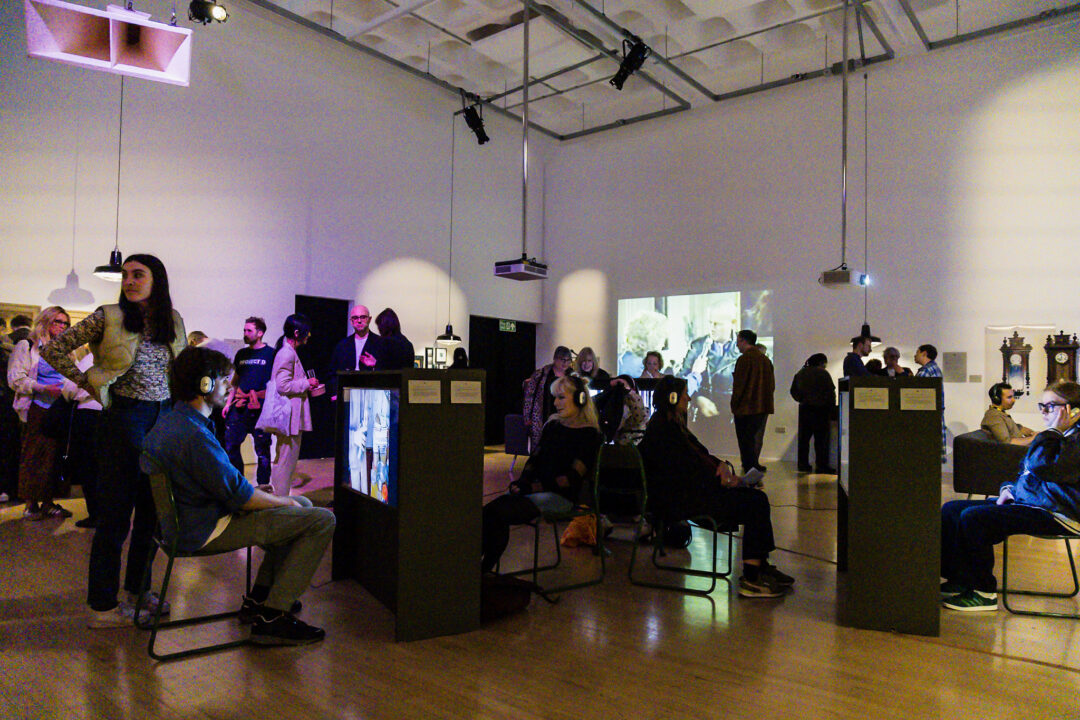
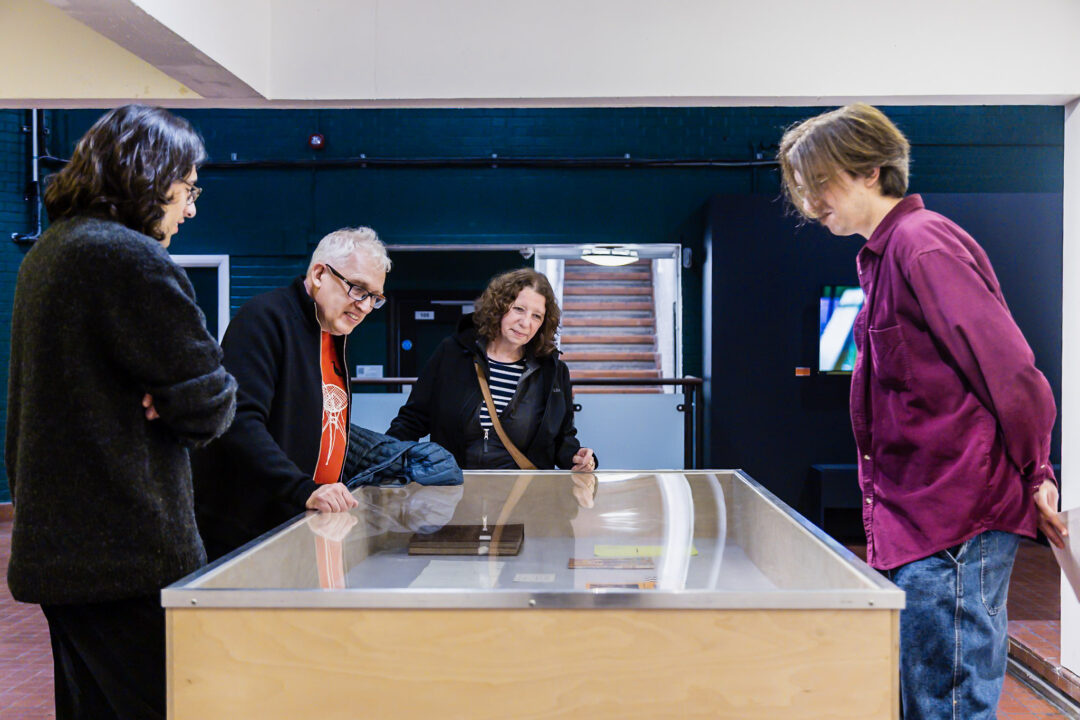

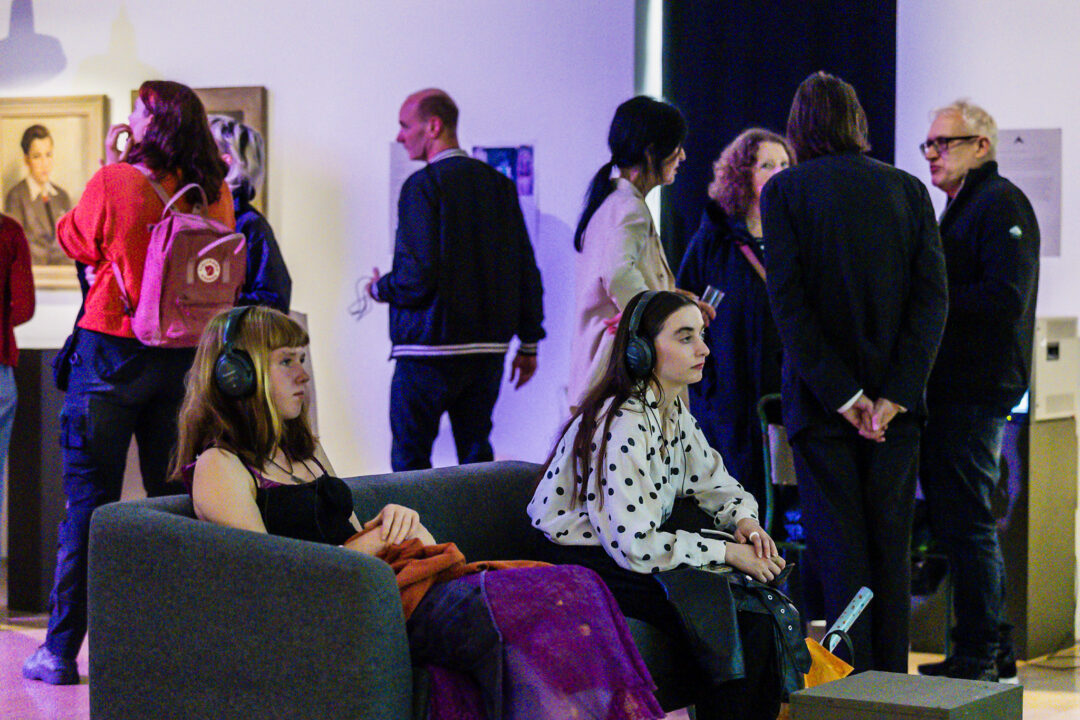
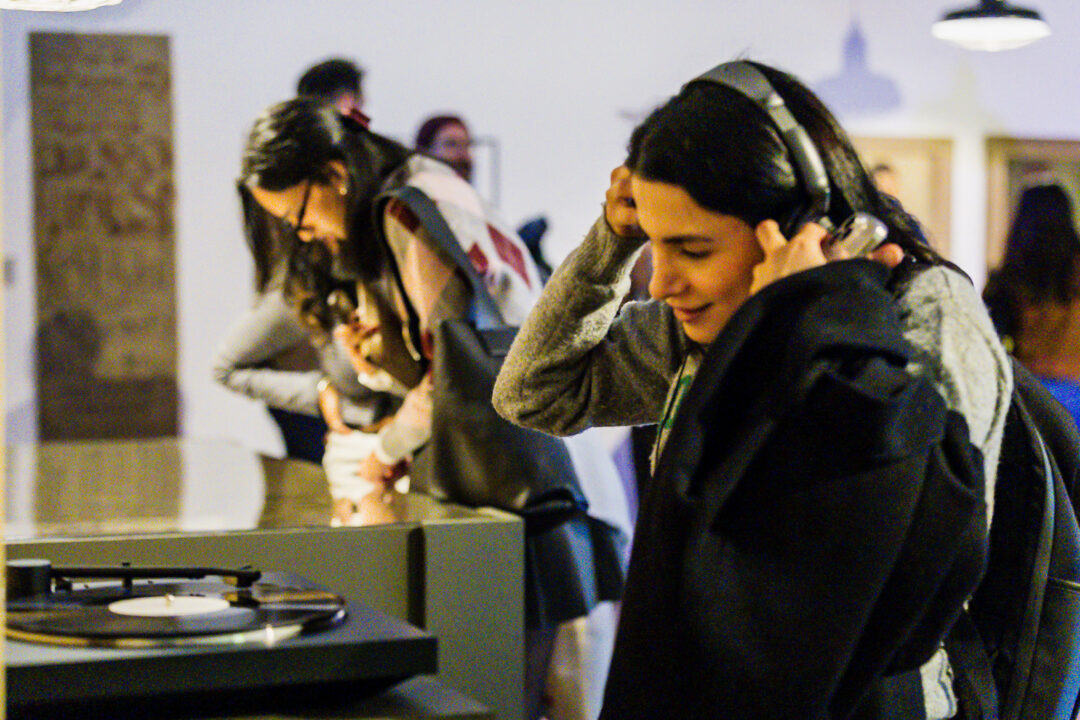
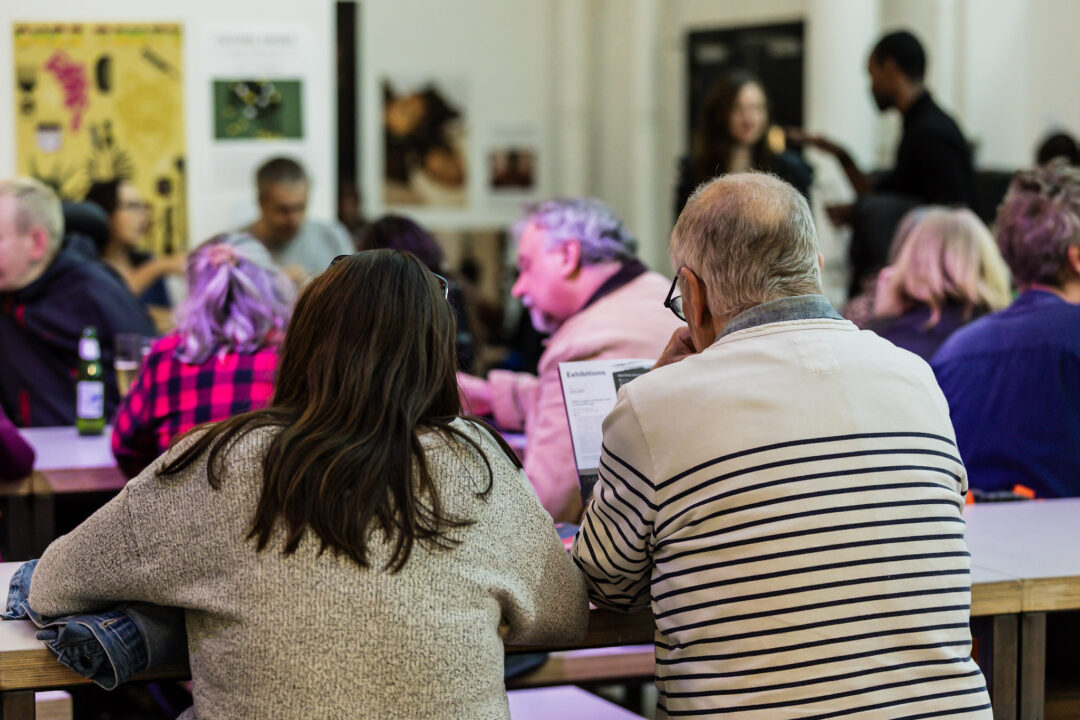

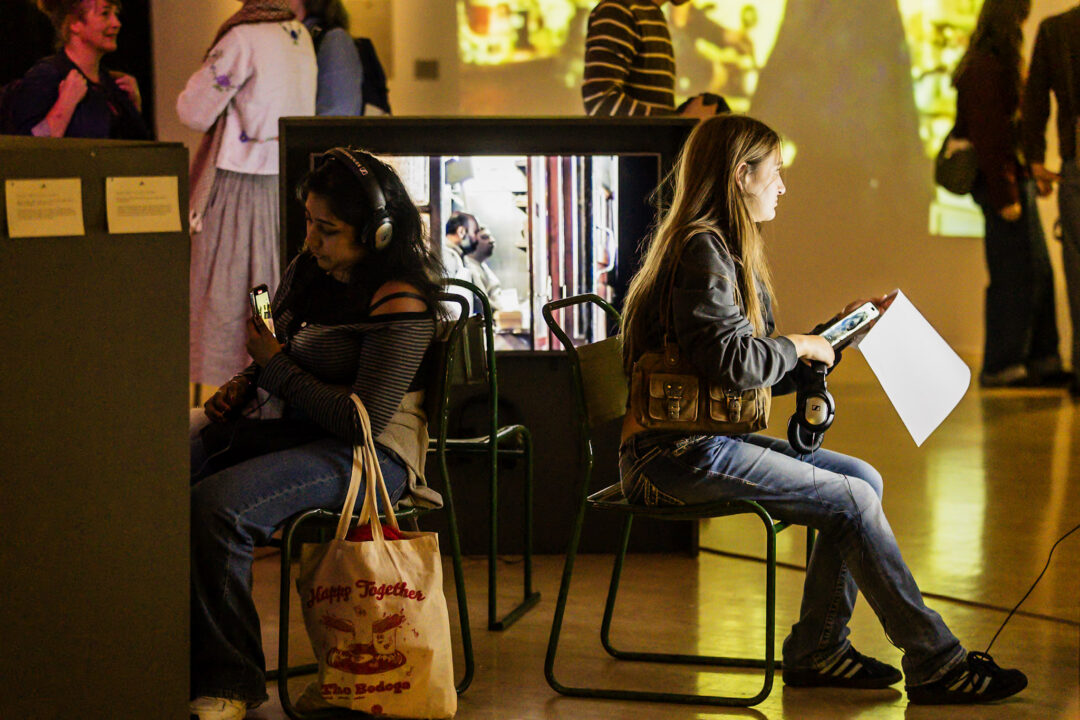
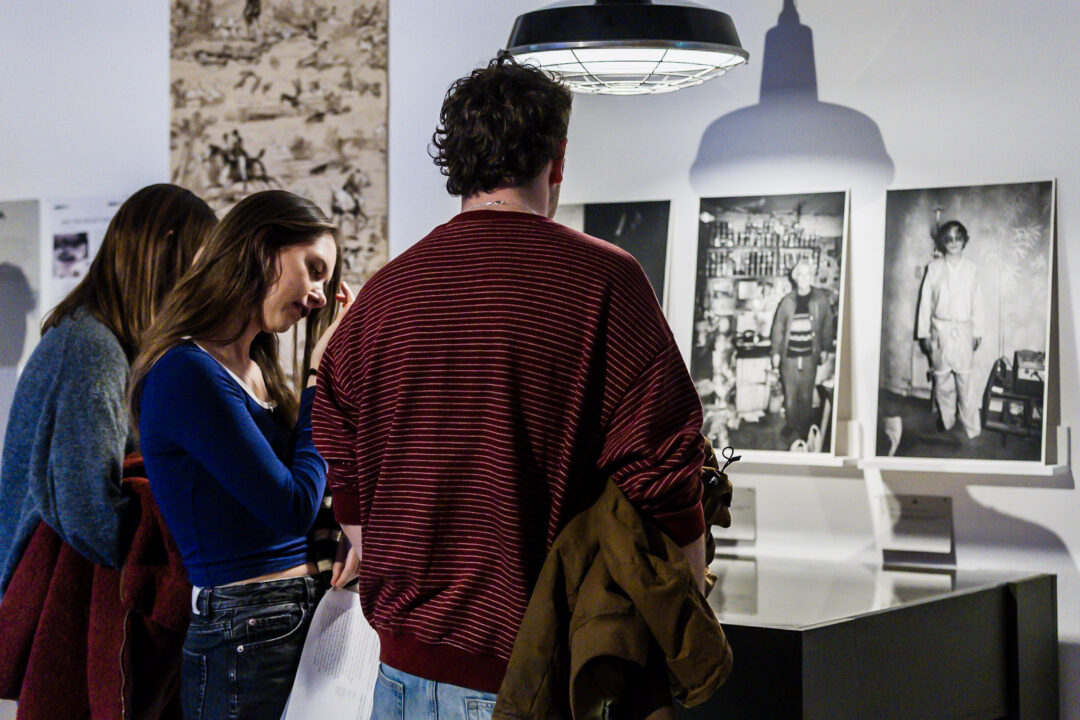

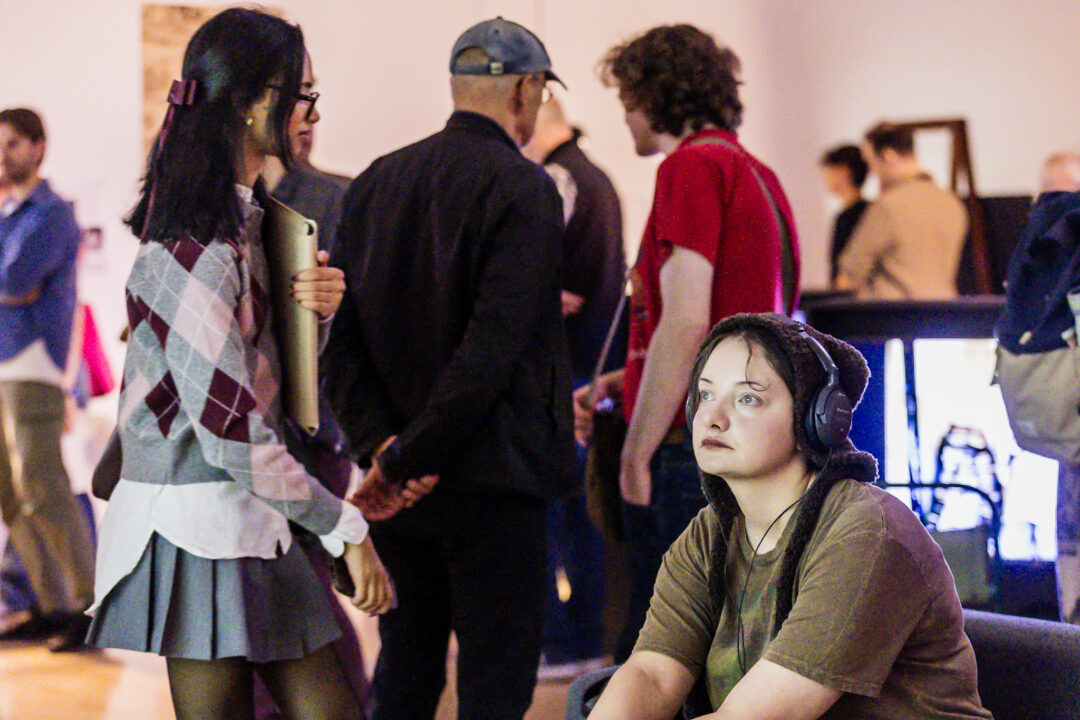
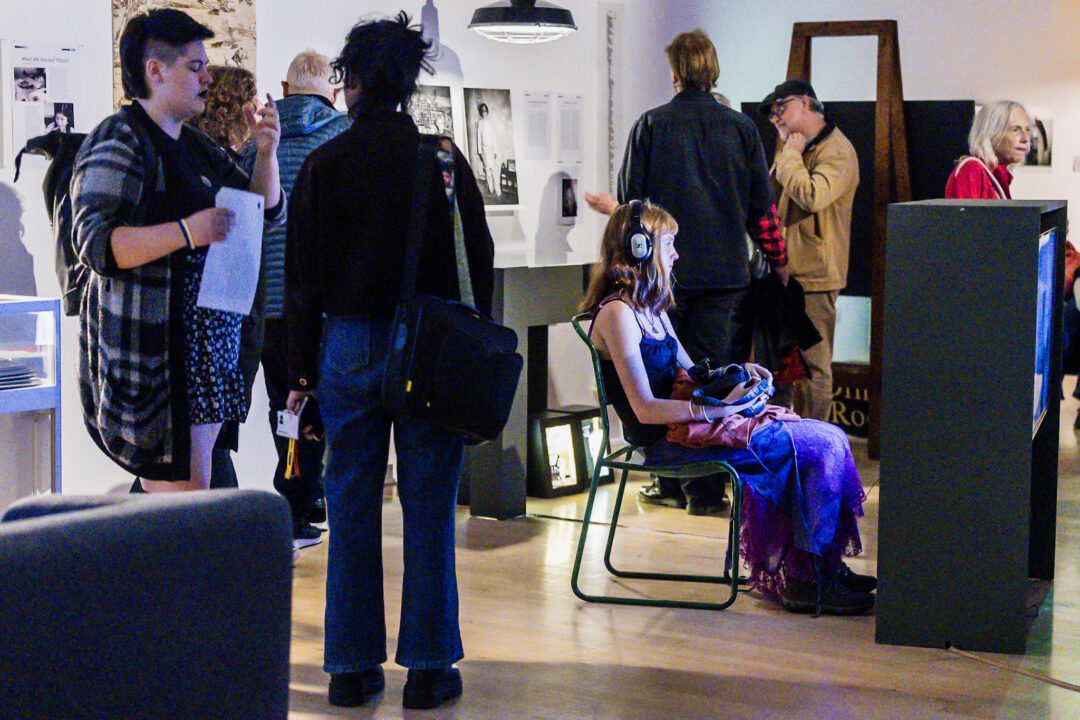
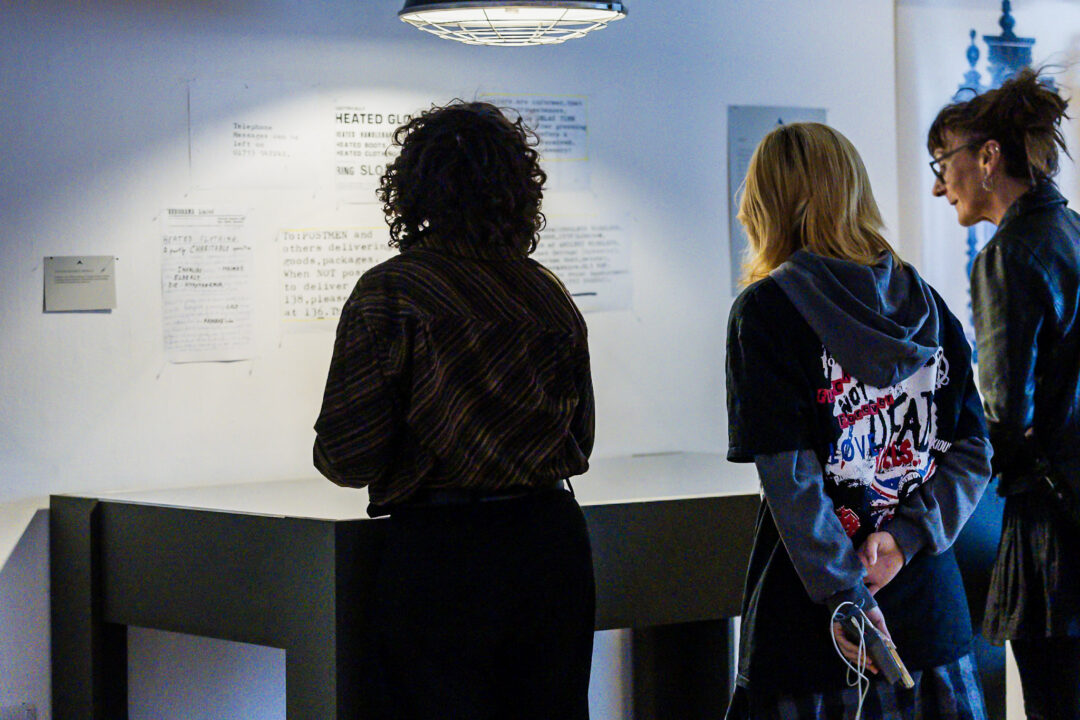
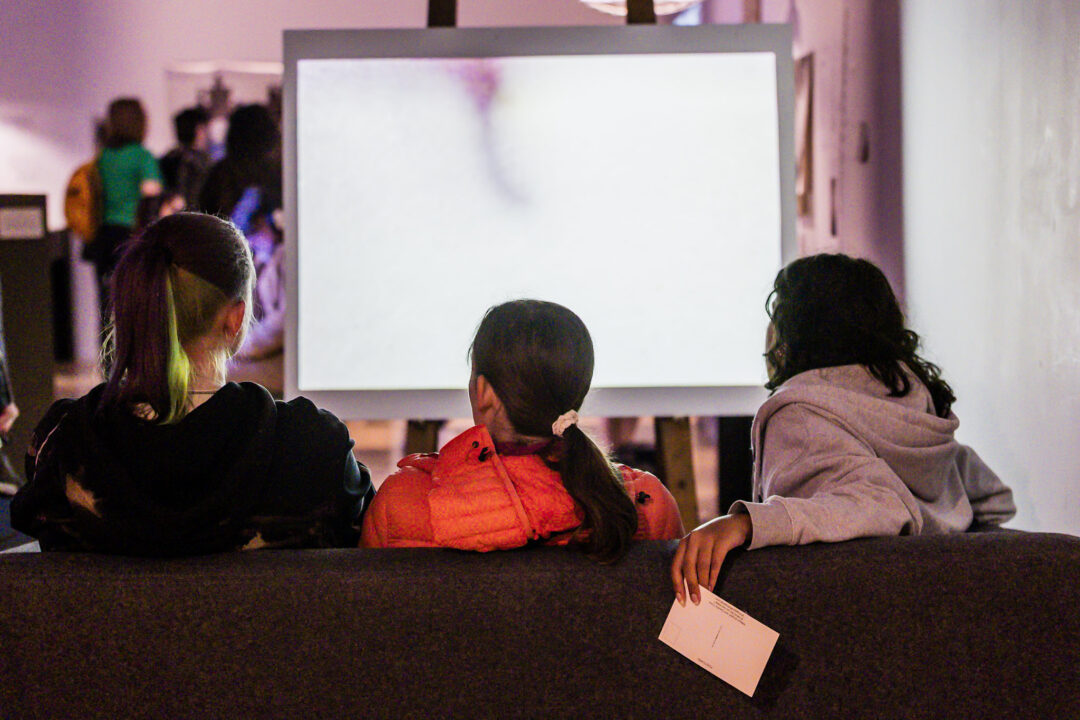
For the 28th instalment of the Bonington Vitrines series, we’re delighted to present Someone’s Doing Something, a project by London based curatorial, research and archival platform Gestures, developed in dialogue with writer Isabelle Bucklow.
This project, featuring artists such as Stuart Sherman, Simon Moretti, and Yvonne Rainer, will present a selection of work that explores gesture as a form of artistic expression. Whilst some gestures are recorded through notation or residue, others survive only in documentation or retelling.
The works in Someone’s Doing Something reflect a broad range of these approaches, from the formal to the informal, the scripted to the instinctive, and considers these against shifting times and contexts.
In considering the location of the Bonington Vitrines, as a space that is moved through by 100’s of people each day going about their daily business, this quote by theatre director Peter Brook is considered:
“I can take any empty space and call it a bare stage. A man walks across this empty space whilst someone else is watching him, and this is all that is needed for an act of theatre to be engaged” – Peter Brook.
Full list of artists: Simon Moretti, Allan Kaprow, Richard Schechner, Charlotte Moorman, Nam June Paik and Yoshi Wada, Mieko Shiomi, Sue Tompkins, Bruce McLean, Bruce Gilbert, with Angela Conway and Michael Clark, Stuart Sherman, Anastasia Coope, Yvonne Rainer, Ricky Jay.
Gestures is a London based curatorial, research and archival platform that has organised exhibitions, interventions and projects in locations as diverse as sidewalks in New York and Travelodge hotel rooms, as well as exhibition spaces such as the Postal Museum in London and 47 Bedford Street in London.
Gestures is currently conducting long term research into Situation, a space in London that existed in the 1970s that did early exhibitions with artists including On Kawara, Bruce McLean and Bas Jan Ader.
Along with colleagues WC2E9HA, The Everyday Press aka Bunker Basement and Whatever Anderson, Gestures will open the shared exhibition space Chequers in Summer 2025.
View checklist and text by Isabelle Bucklow here.
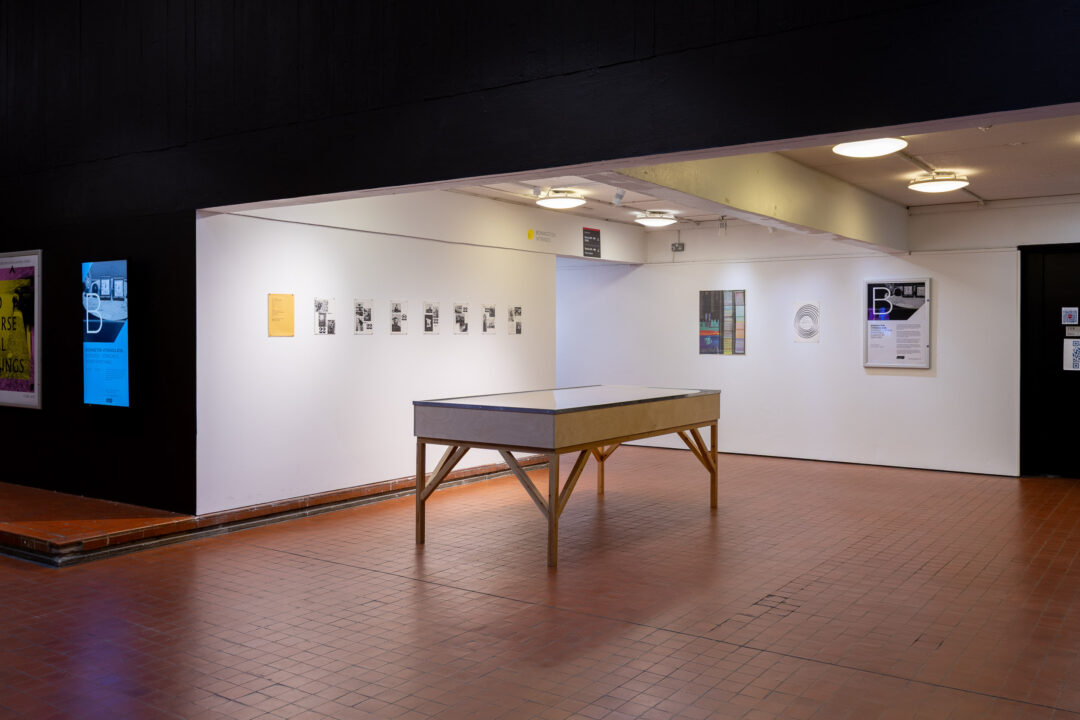
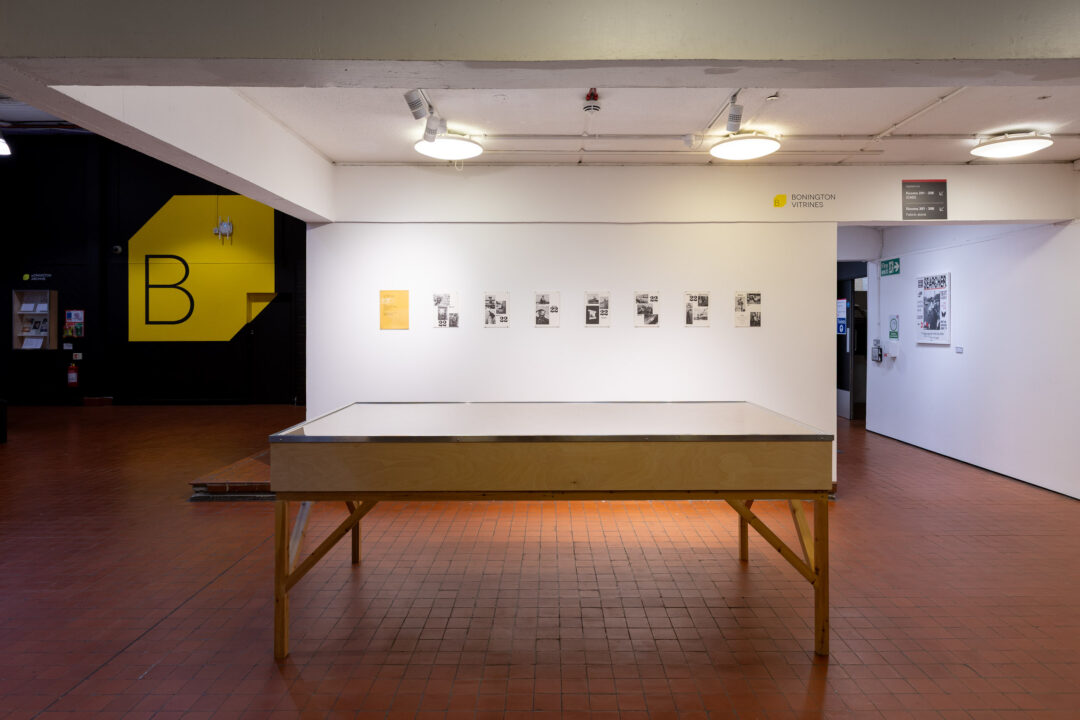
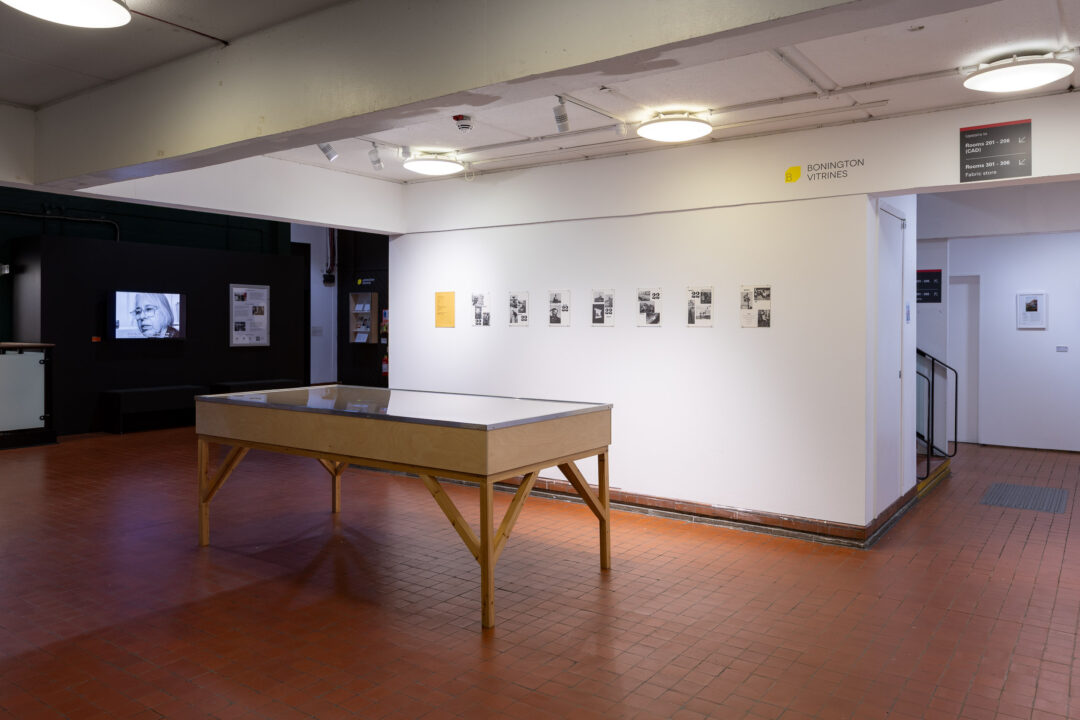
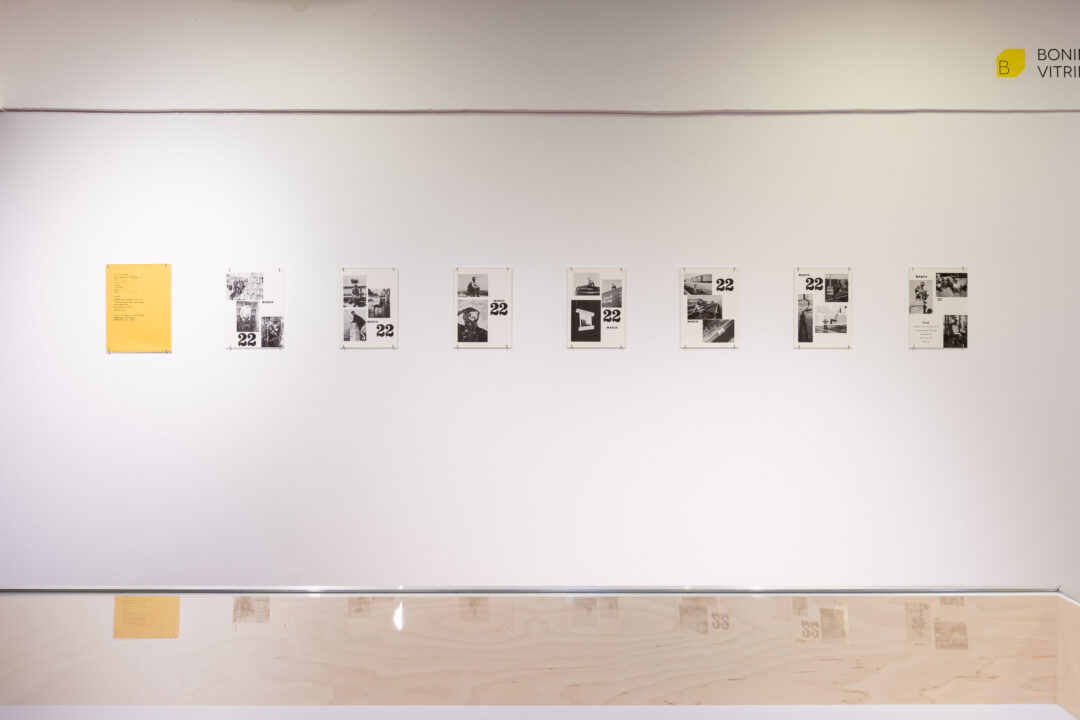
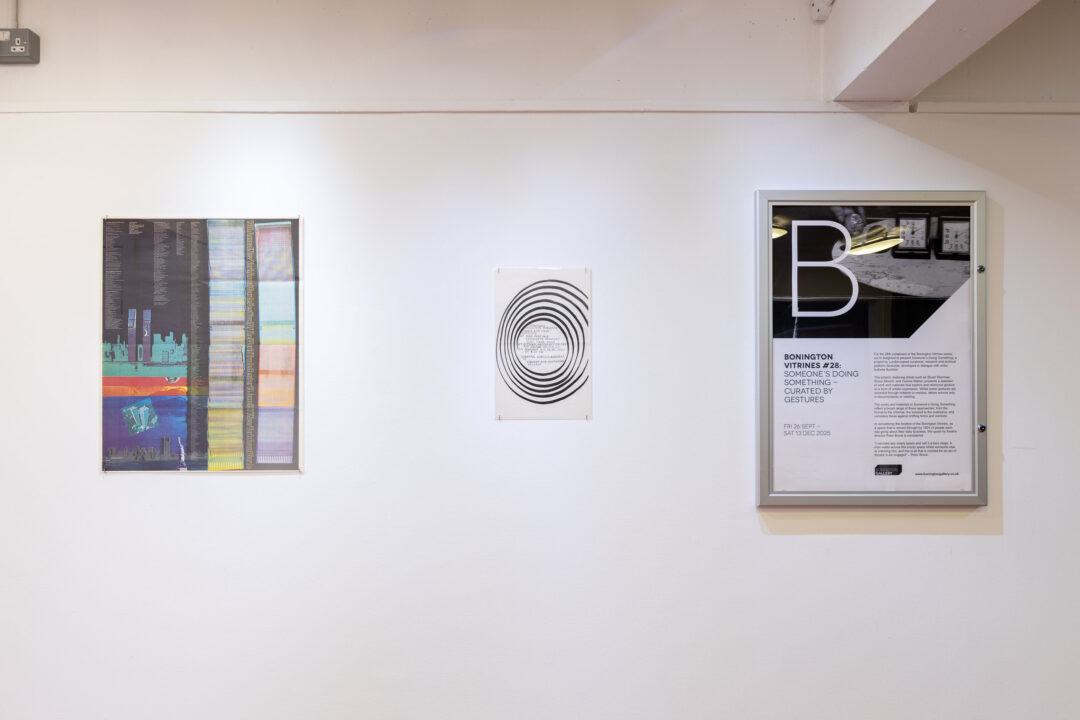
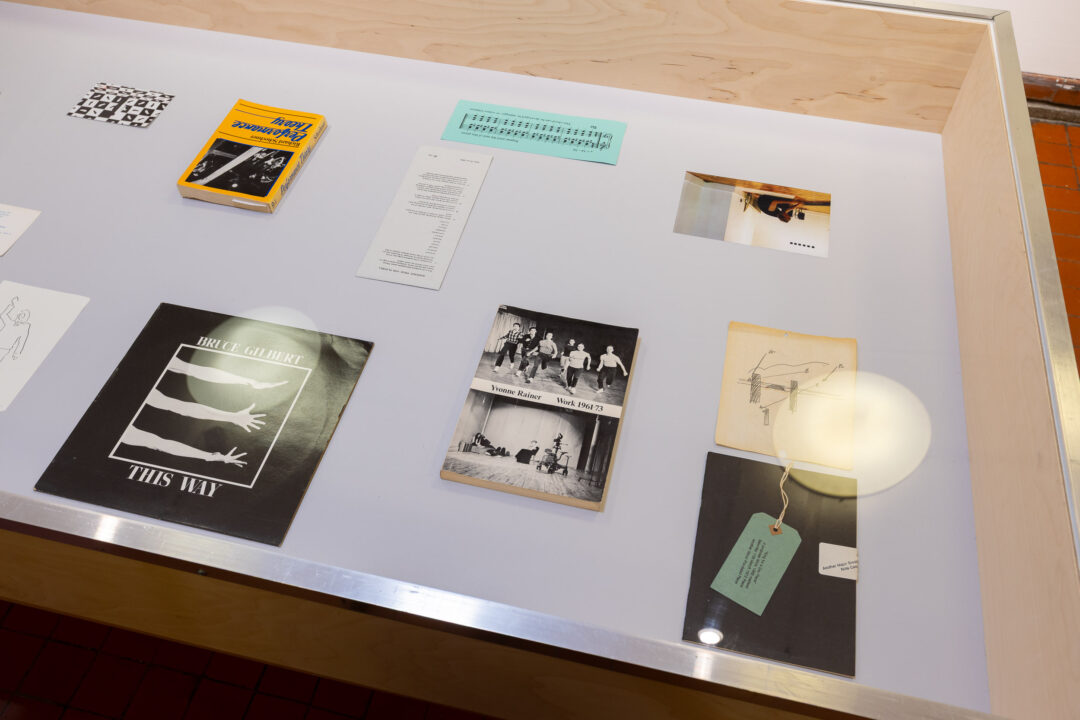
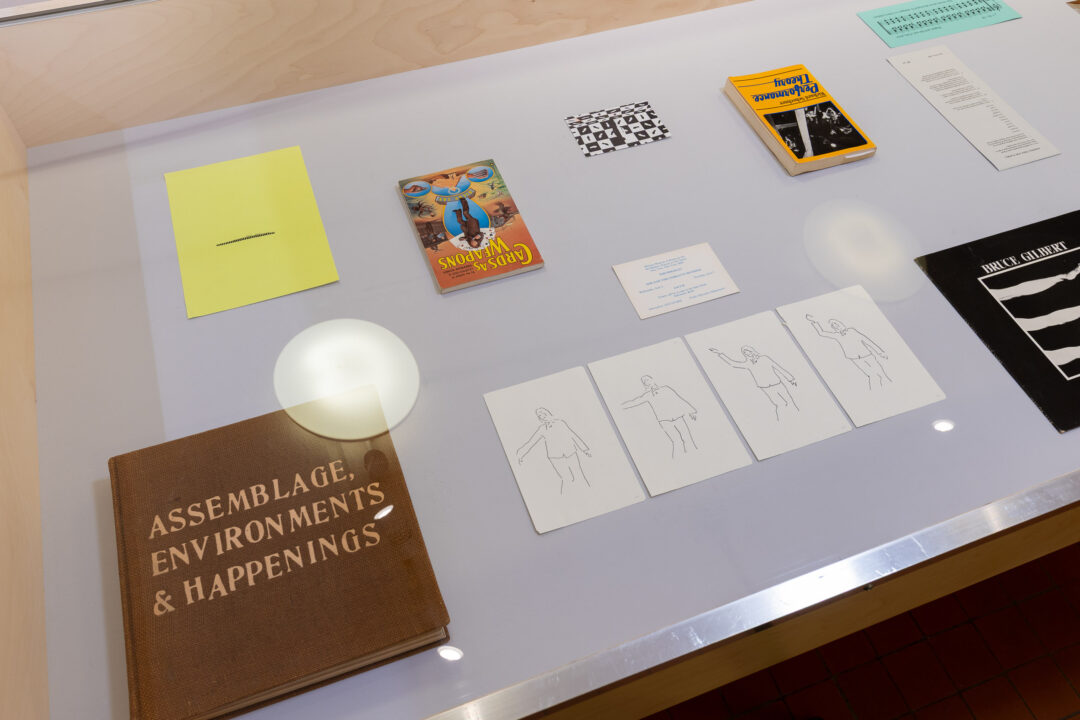
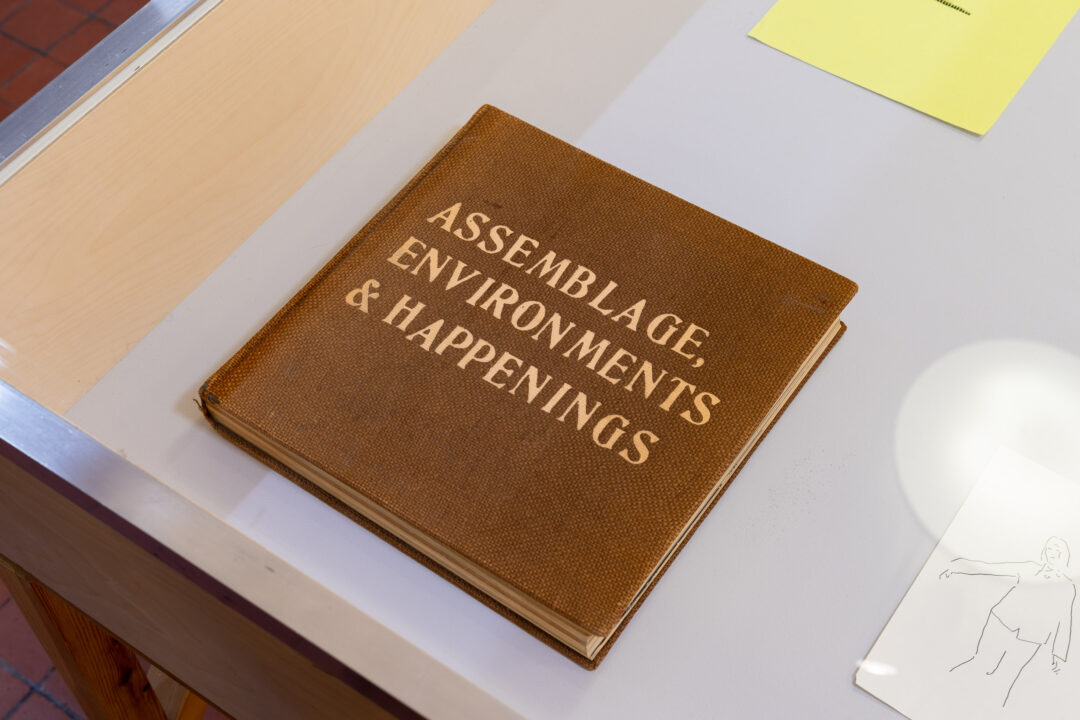
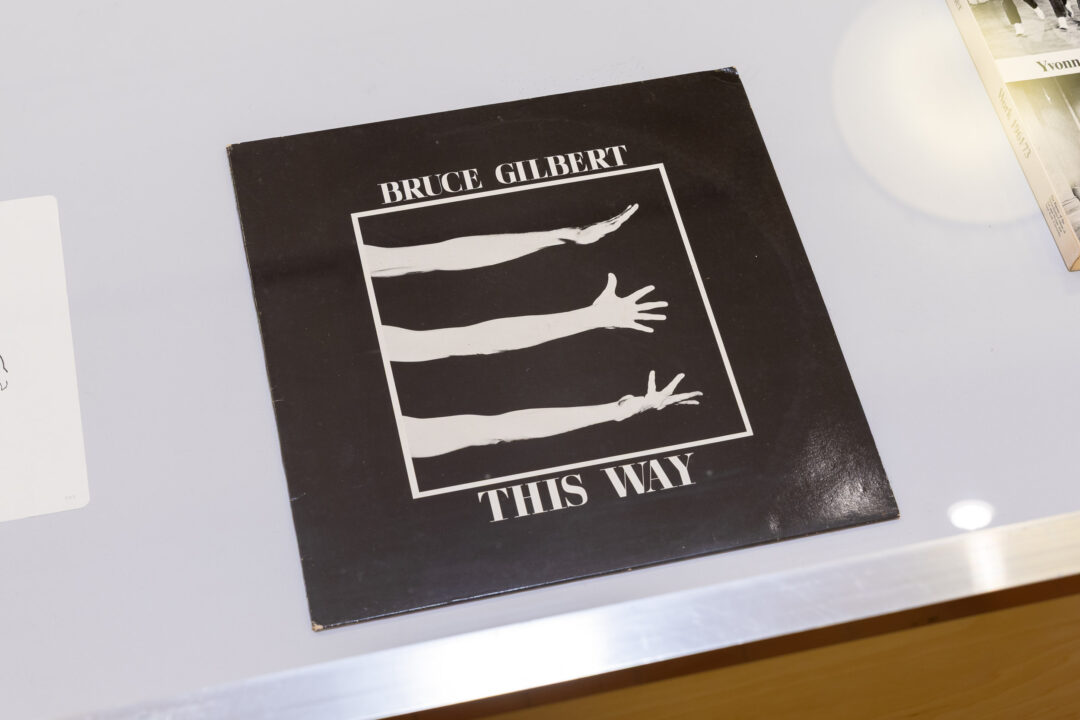
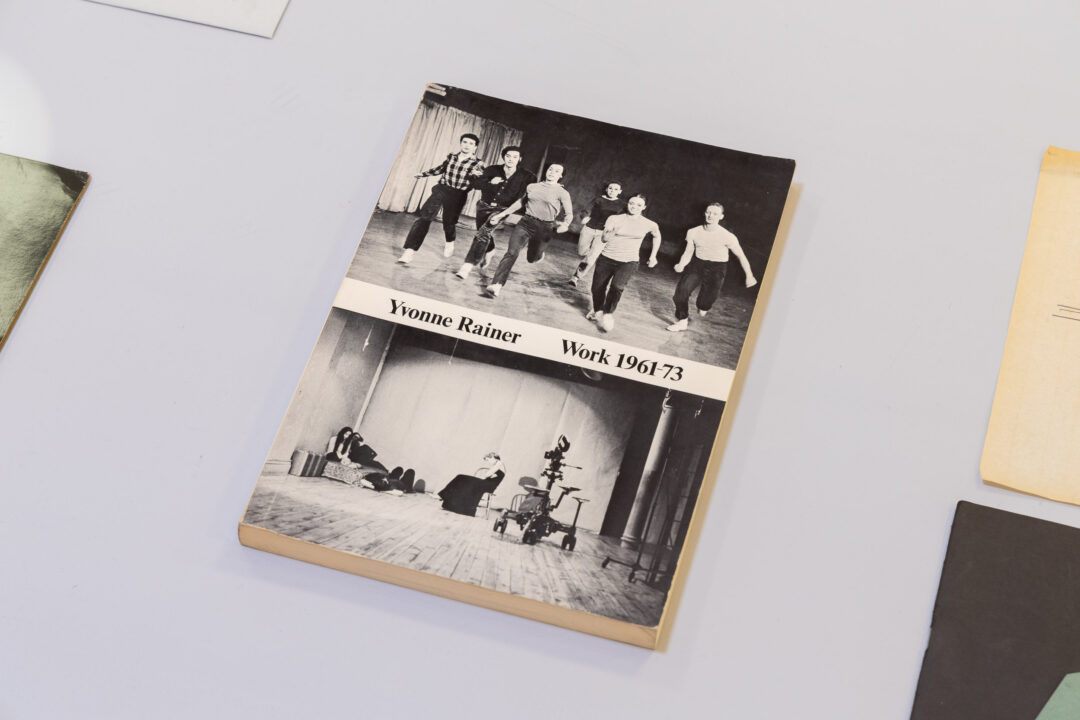
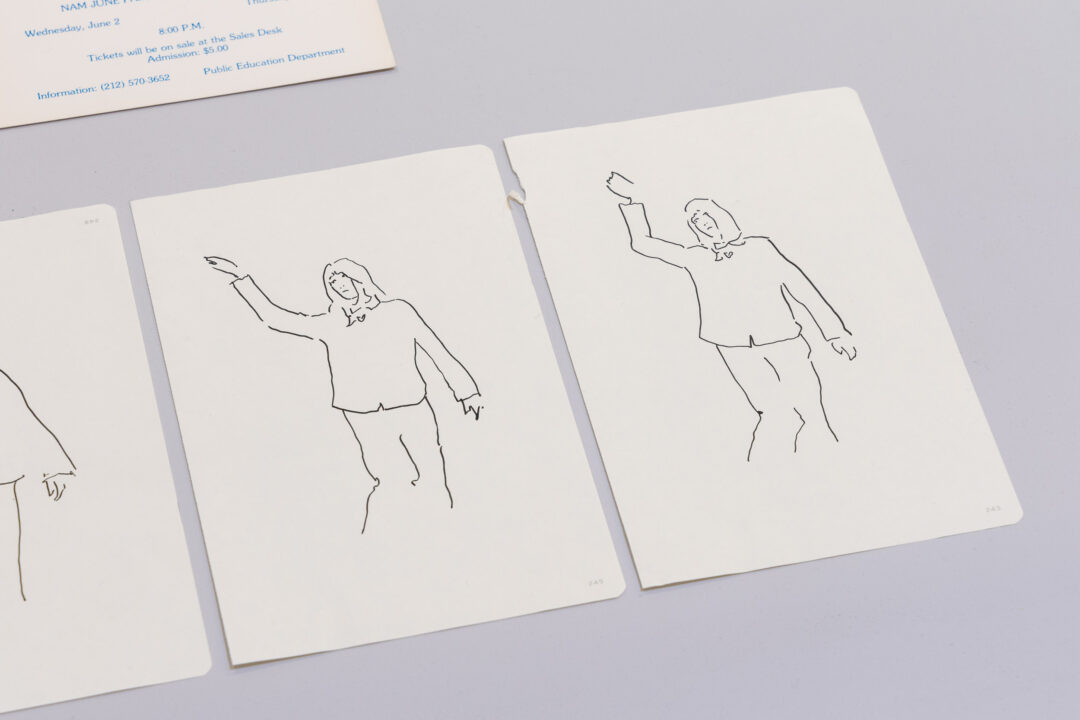
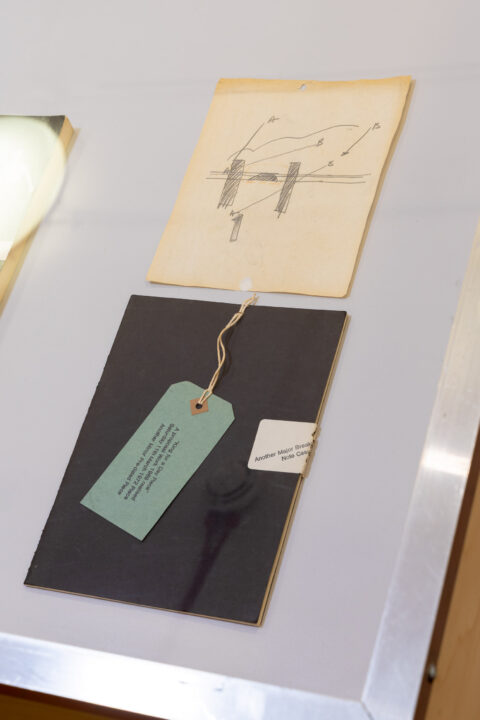
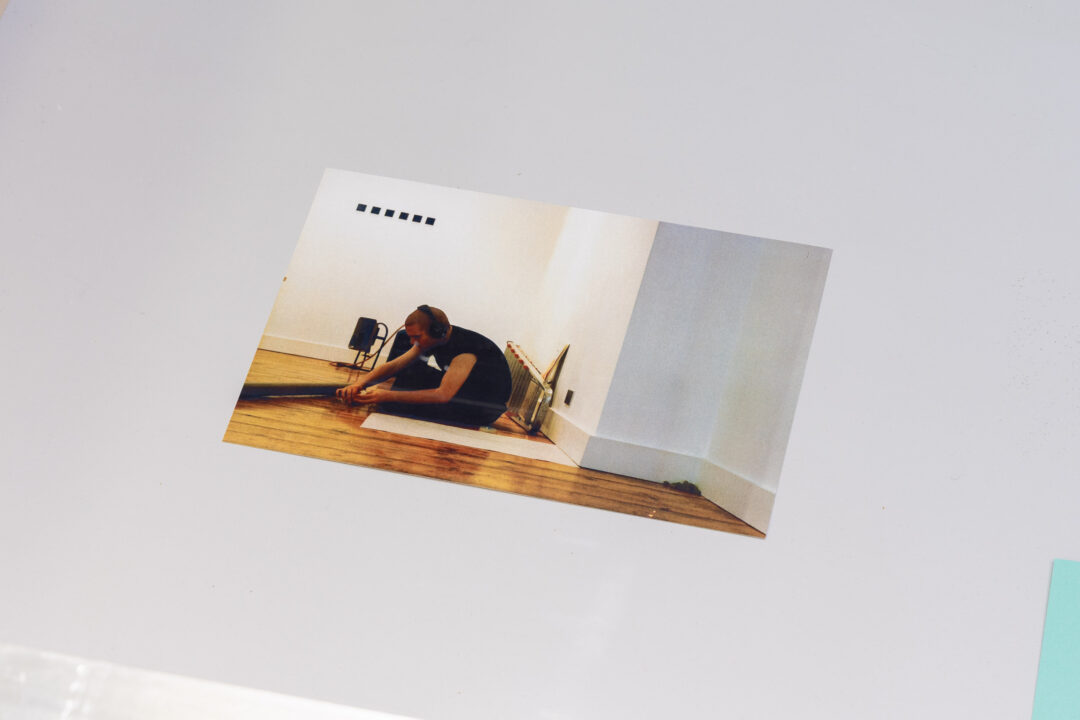
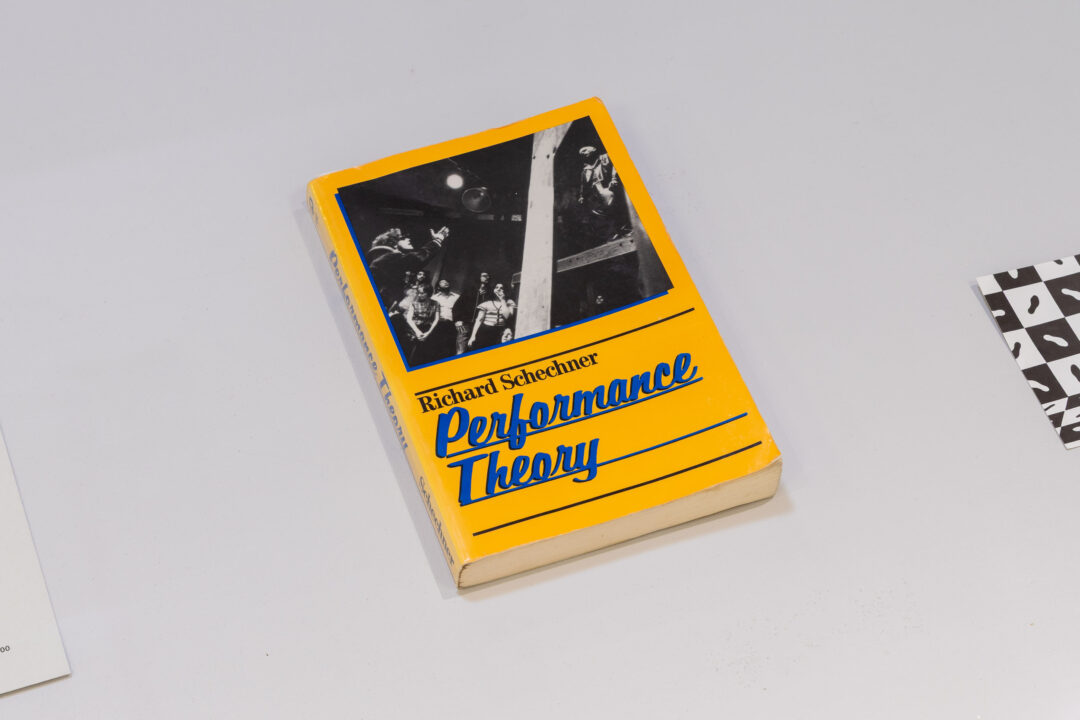

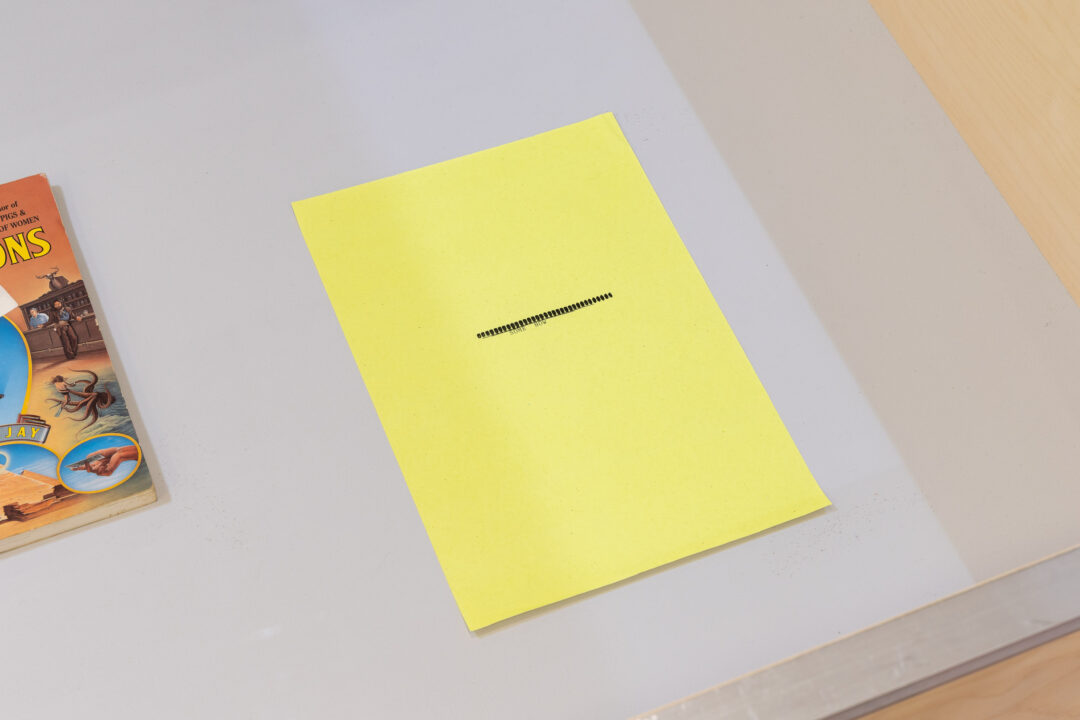
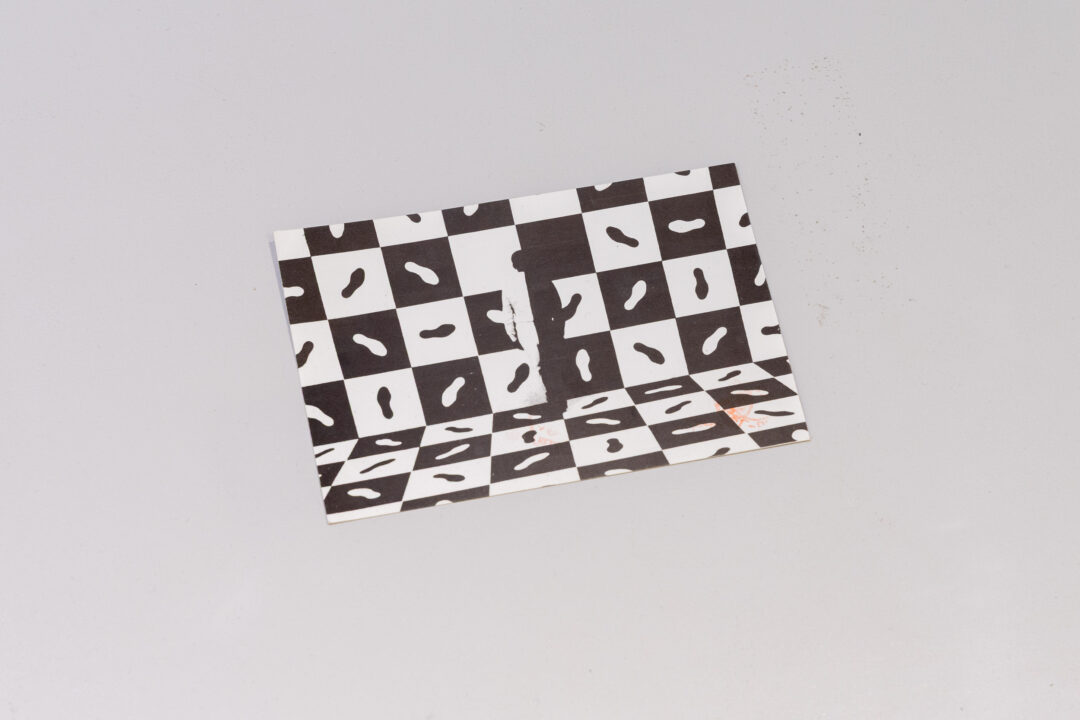
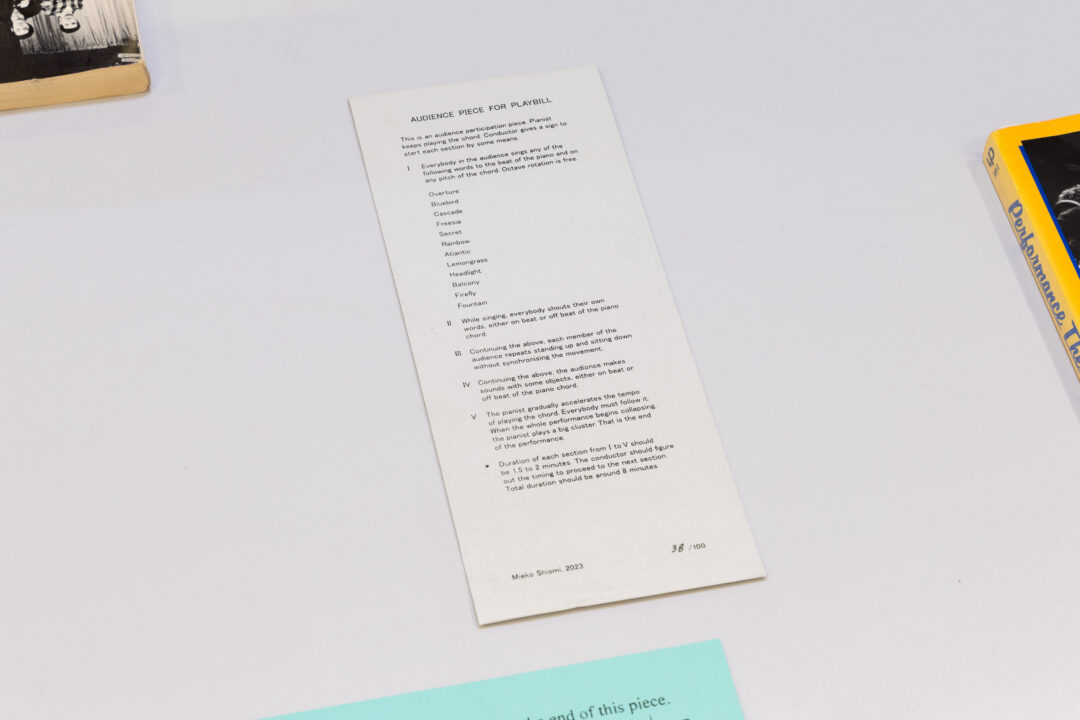
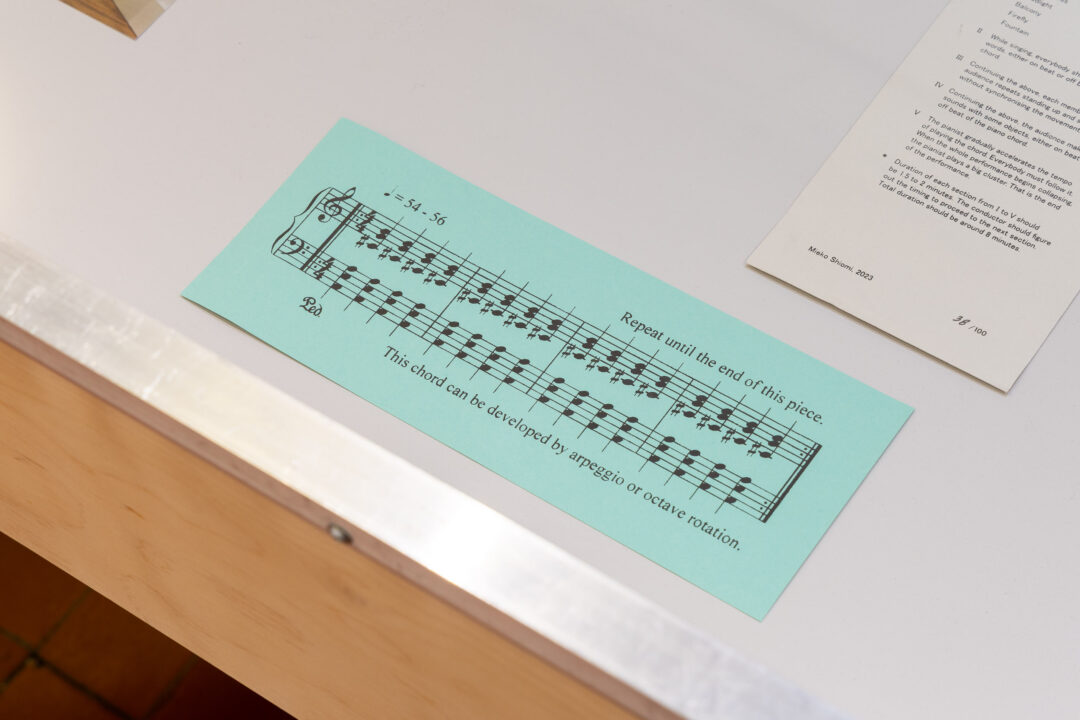
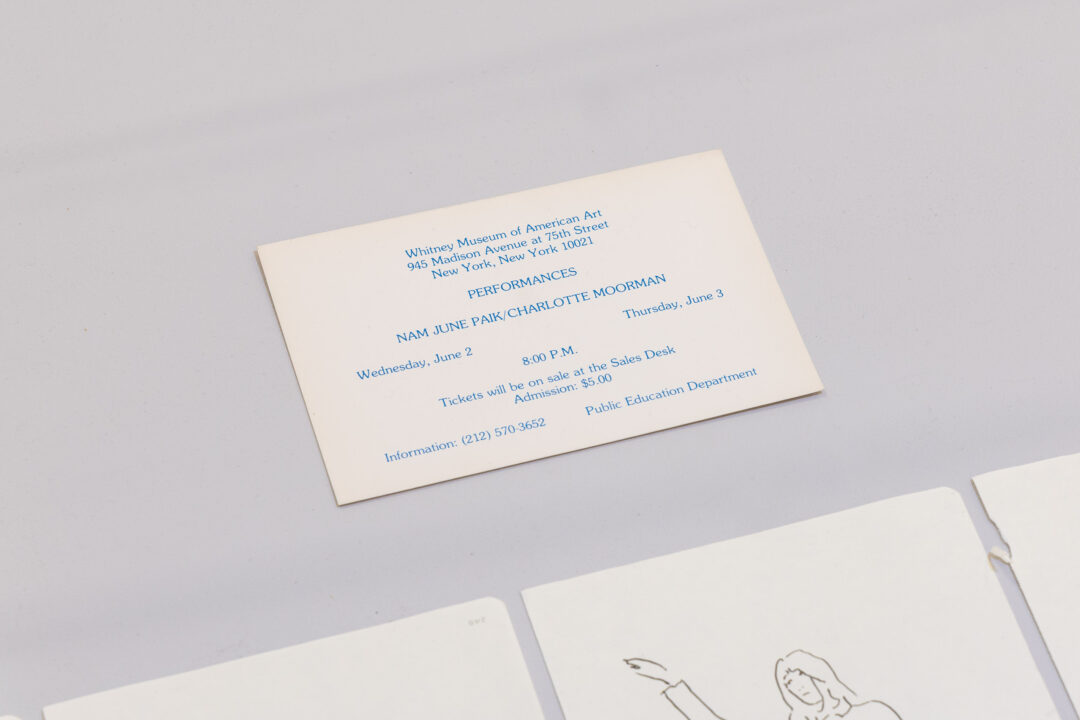

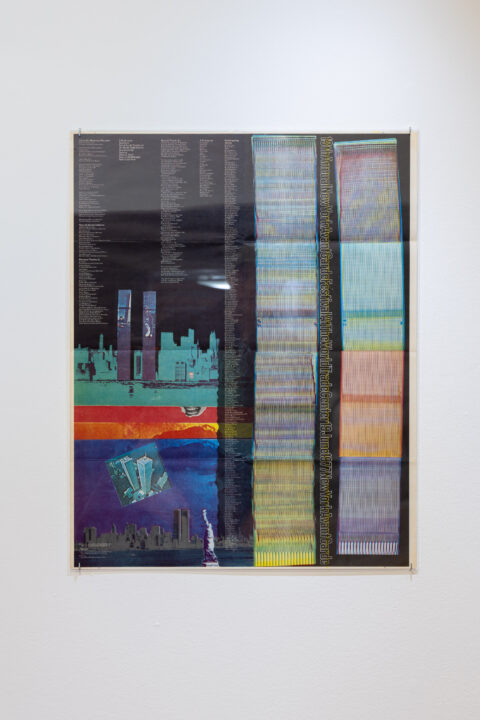
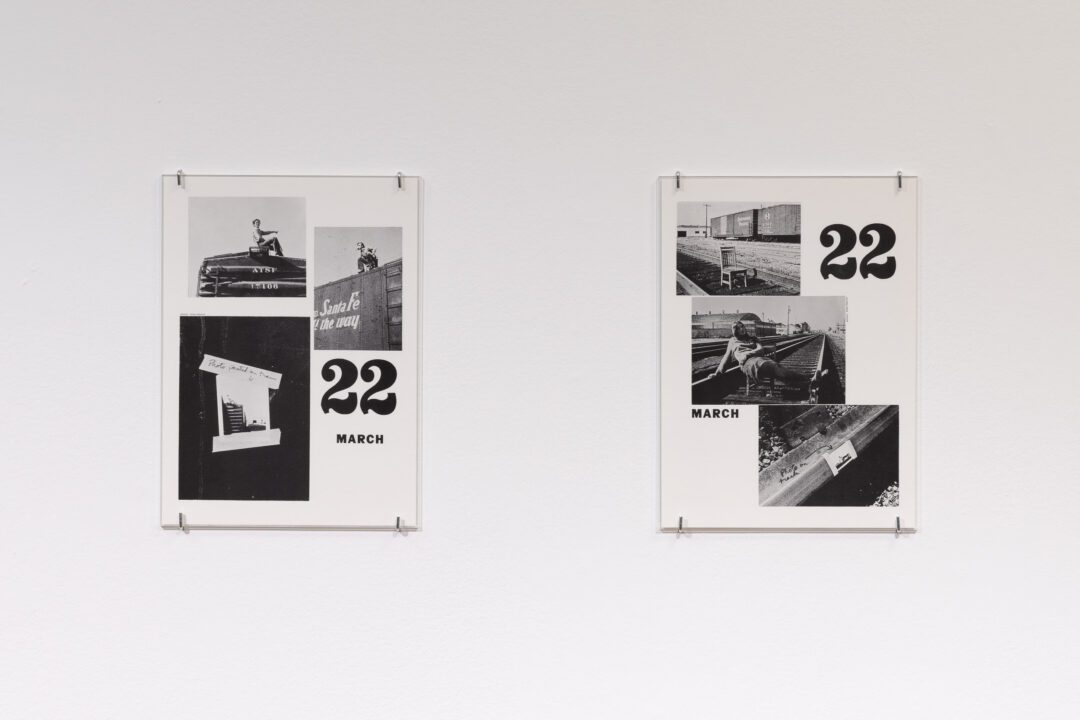
Image credit: Stuart Sherman, The Twelfth Spectacle (Language), photo by Nathaniel Tileston, 1980, as included in The Stuart Sherman Papers, 2025.
Join multidisciplinary artist and illustrator Arianna Tinulla Milesi for this free, two-day workshop in response to our current Bonington Vitrines exhibition Nottingham Subcultural Fashion in the 1980s.
We’re delighted to welcome Arianna, who is currently in residence at NTU on the AA2A programme, to run this public workshop. Through her ongoing project This room has no walls anymore, just endless trees Arianna creates shared spaces through the act of drawing – making opportunity for discussion and the sharing of knowledge, storytelling, materials and skills.
Responding to themes in our Vitrines exhibition, Arianna will explore relationships between fashion, devotional and ritual orientated contexts. You don’t need to have skills in sewing or making and we’ll provide all the materials – though you are invited to bring along an item of clothing to work with on day two if you’d like to.
On day one of the workshop, Arianna will introduce you to some of the key themes in her work. You’ll use these as prompts, encouraging you to share your own experience of ritual, participation in groups, and subcultures – or to simply share your personal responses to the exhibition. The aim is to create a communal and safe space to hold these different types of experience precious.
Day two of the workshop will be more practical and hands-on. You’re invited to customise an item of clothing, channelling some of the thinking from the first day – what clothes communicate, re-interpreting the purpose of clothing, rituals, and ideas of belonging.
About the artist: Arianna Tinulla Milesi
Arianna Tinulla Milesi is a multidisciplinary artist and illustrator based in the UK. Drawing is the core of her work, not only as a practice but also as a cognitive tool to understand reality and create. Coping mechanisms, devotional art, seaweeds, the formation of memories and syncretism are pivotal points in her research, which is open and interactive.
Arianna is a member of the Council of the Society of Graphic Fine Art (SGFA). She collaborates with art institutions all over the world and is devoting an increasing amount of time to the organisation of workshops oriented to nature, to make wearable art, to convey human connections and mental health.
Bonington Connects
Bonington Connects is a series of talks, discussions and workshops planned by Nottingham Trent University students, inviting people to engage in thought-provoking conversations in response to the Gallery’s exhibition programme. It aims to create an accessible atmosphere, encouraging exploration of the exhibitions in an informal, open and engaging setting. This workshop has been planned and organised by final-year MFA Fine Art student, Vidhi Jangra.
We are pleased to acknowledge that funds from NTU TILT have supported this event.
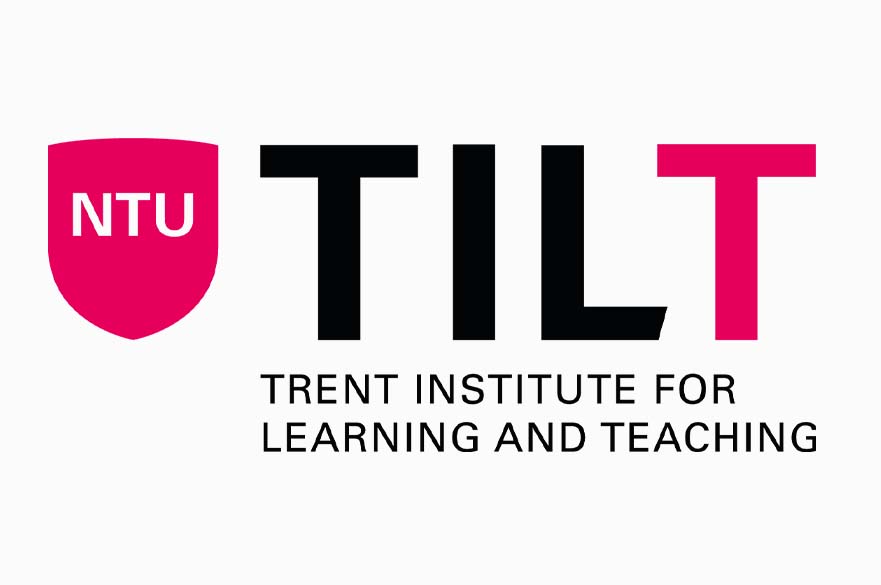
We are delighted to be dedicating the final Vitrines instalment of our 2024/25 season to archive material, information and clothing that documents the dynamism of the independent fashion scene of Nottingham in the 1980s.
In the years following Beeston-born Sir Paul Smith’s ascendency from a 3x3m store on Byard Lane in 1974 – to bases in London, Paris and Tokyo – many local fashion brands were established, including several by graduates from ‘Trent Poly’, who bucked the moving-to-London trend by committing themselves to the city and starting a new generation of independent labels. Homegrown brands such as G Force, Olto, Vaughan & Franks, Katsu and Cocky’s Shed were a just a few…
These brands combined talent, style discernment, DIY attitudes and cheap rents to start labels, open shops, and form global influence and connection. At one point the city even gained its own style pages in the form of Déspatch, Relay and Débris magazines, providing content as broad ranging as fashion editorial featuring local and international designers, montages of nights at The Garage, and signposting visitors to the shops and studios that were physically and ideologically a long way from the High Street.
The fashion scene that developed placed equal importance on both studio and social time, building a network of close-knit creatives who collaborated and supported one another. This community incapsulated many of the same qualities that gave rise to other significant, and perhaps more well-known cultural communities such as the city’s music, cinema and contemporary art scenes.
The aim of this presentation is to celebrate and help establish a legacy for this important period within the city’s [sub]cultural history. An open call for materials will run in the lead-up and during the exhibition, allowing anyone to submit related materials that will join the exhibition and evolving noticeboard.
Accompanying the exhibition is a suite of specially commissioned essays by independent scholar Ian Trowell. Ian has also provided curatorial consultancy and research to this project, having interviewed several of the key protagonists of that era. Ian writes on subjects including UK subcultures, music, fashion, popular culture, art and media. His book Throbbing Gristle: An Endless Discontent was published by Intellect Books in 2023.
This exhibition has been co-curated with Dr Katherine Townsend, a researcher, educator, practitioner and Professor in Fashion and Textile Practice in the Fashion, Textiles and Knitwear department in the School of Art and Design at Nottingham Trent University.
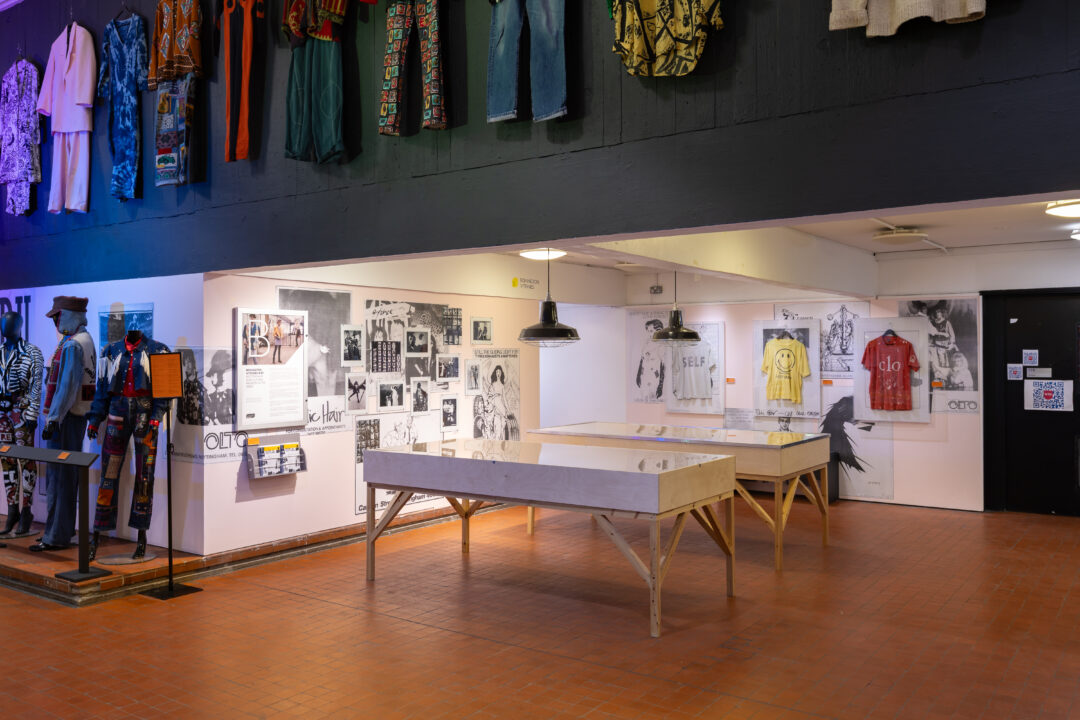
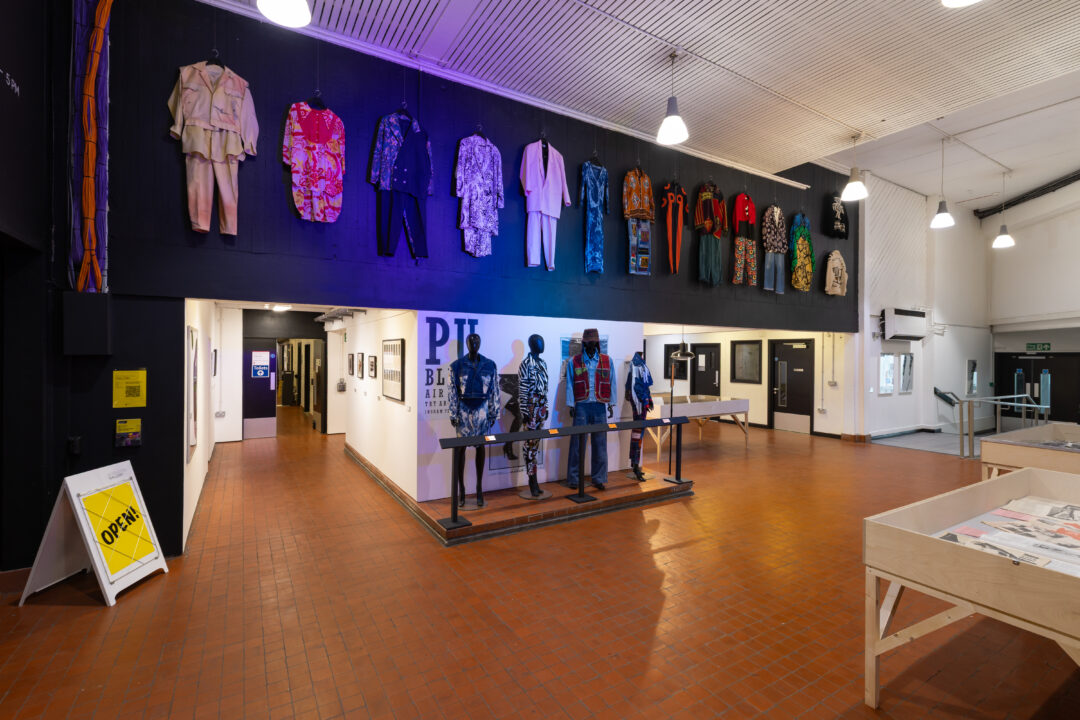
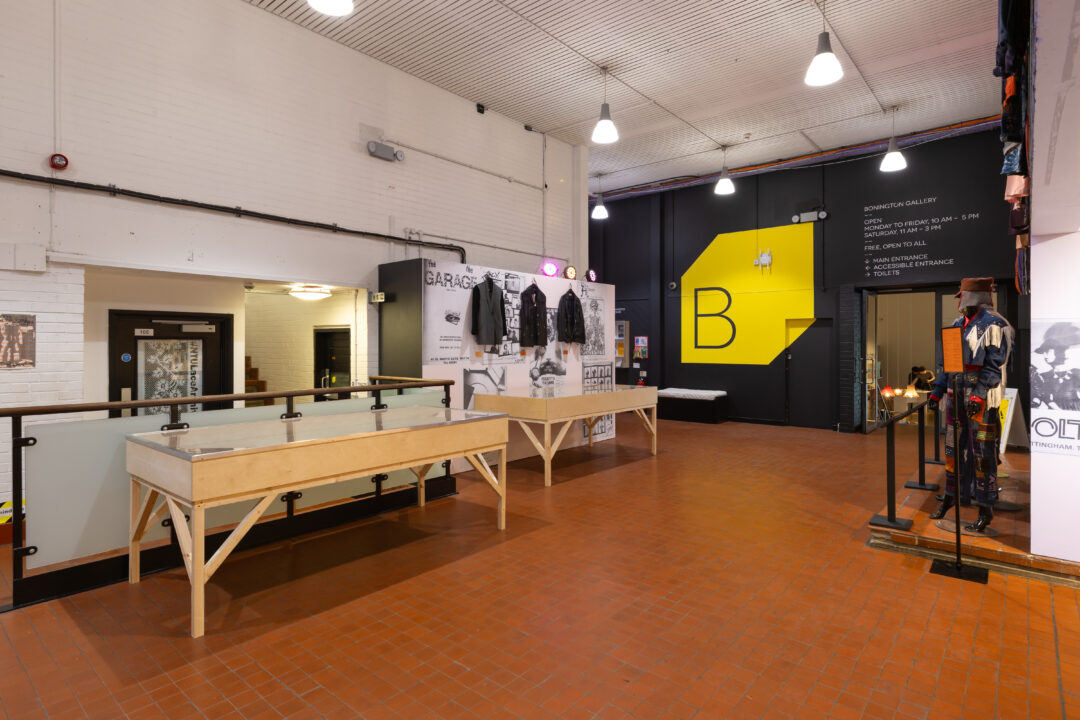
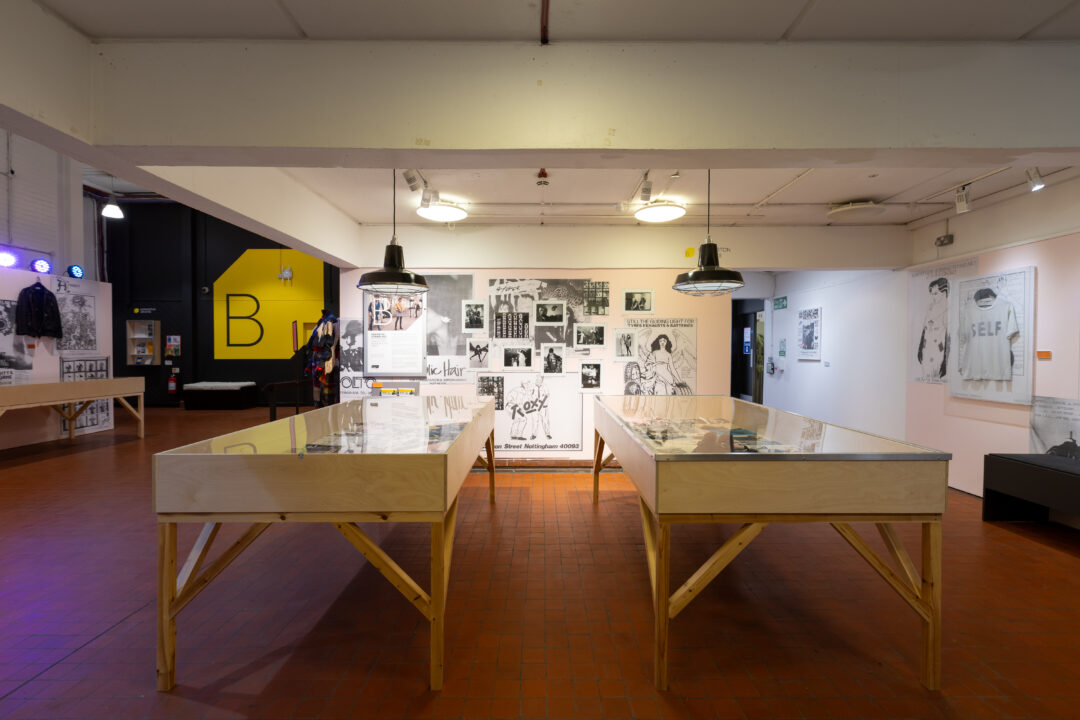
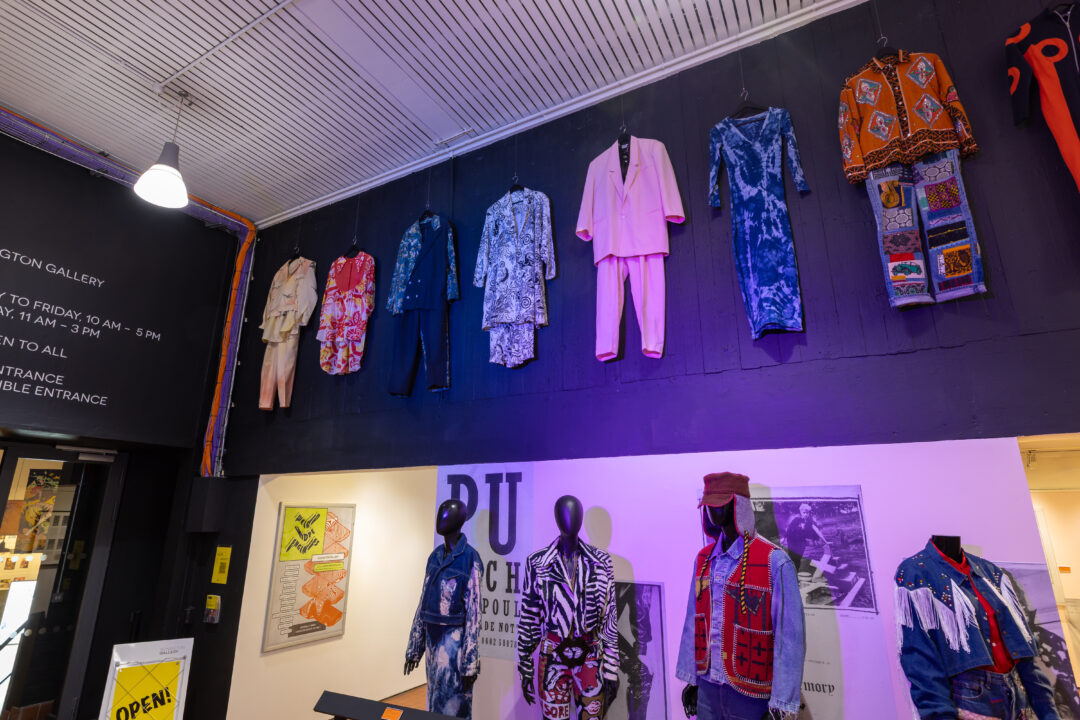

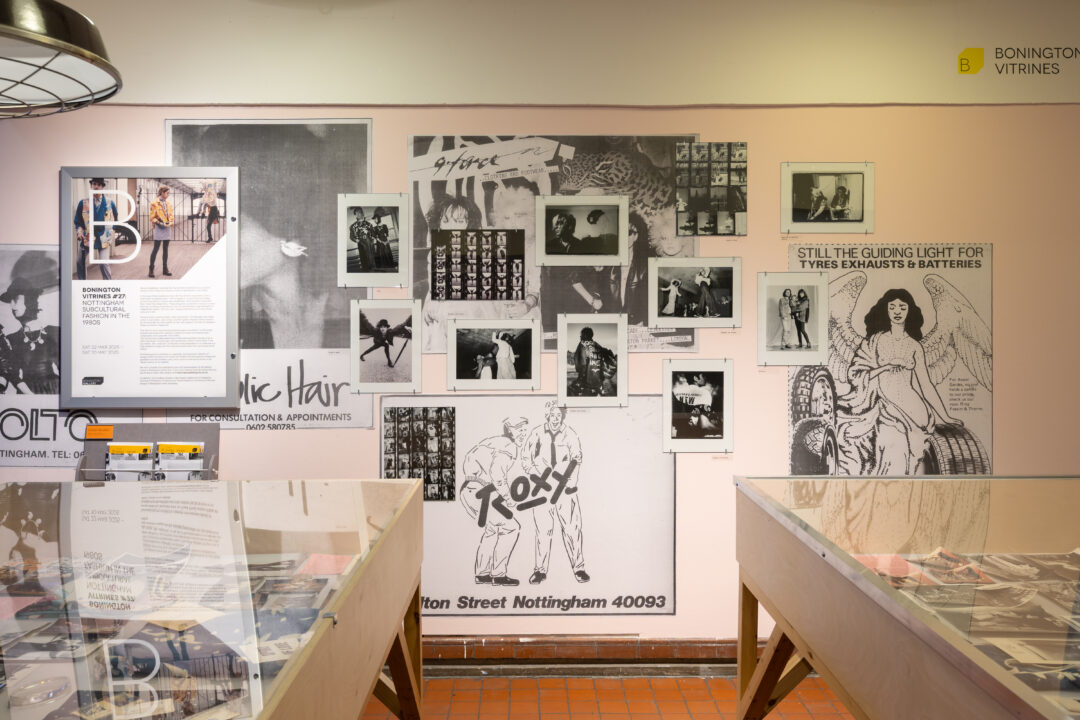
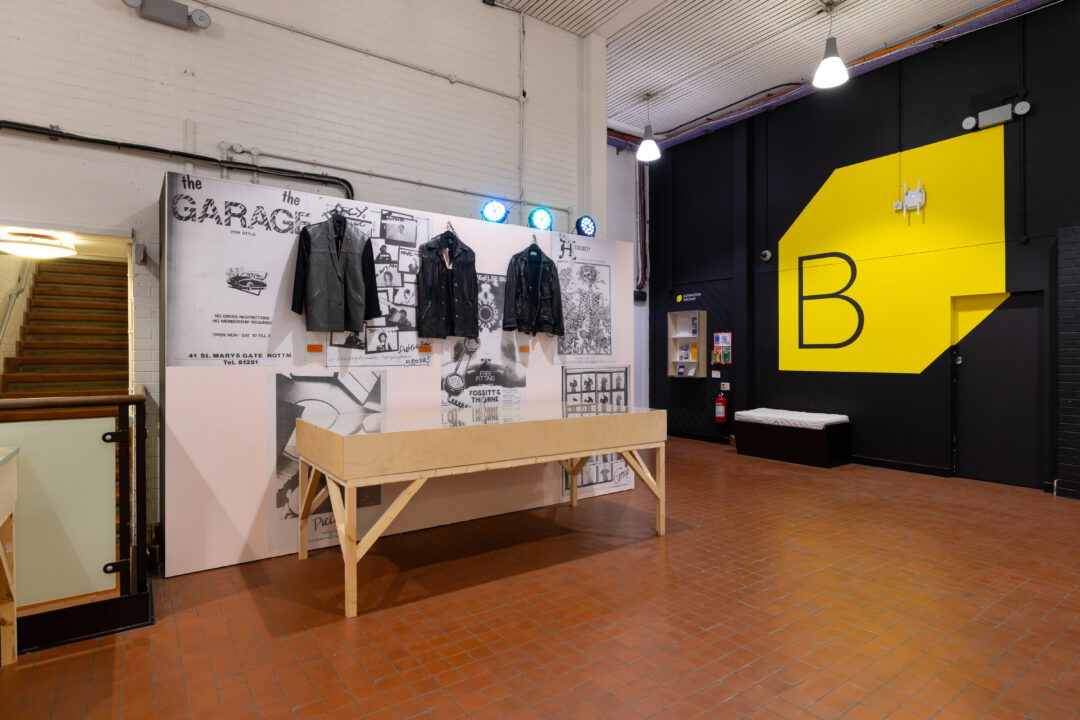
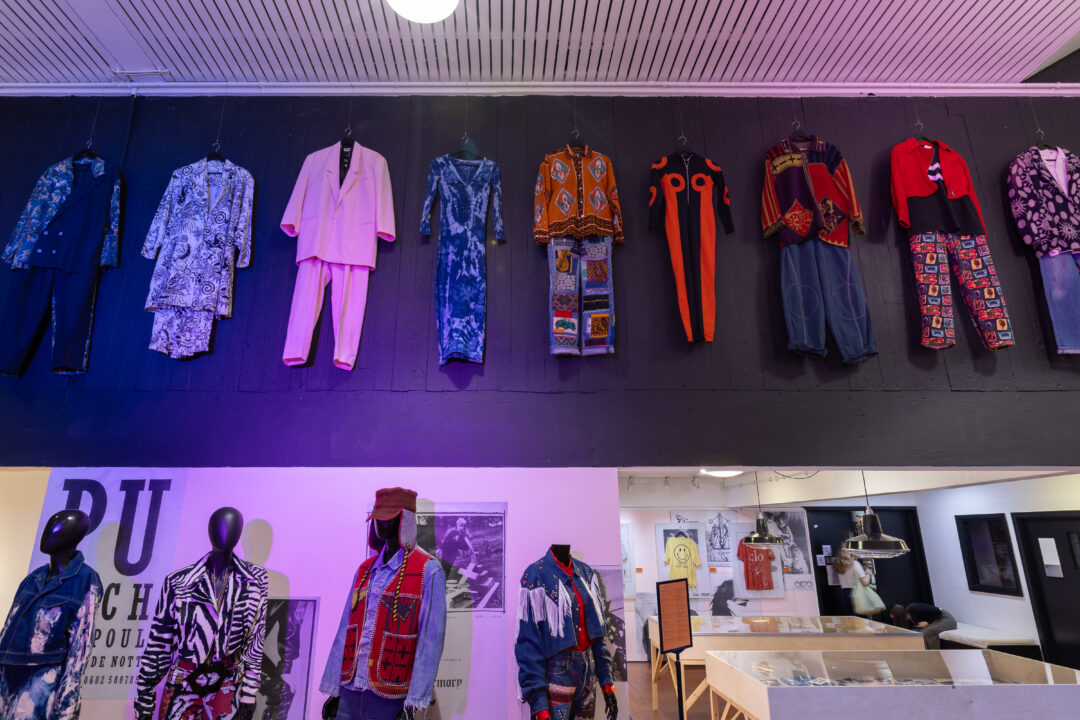
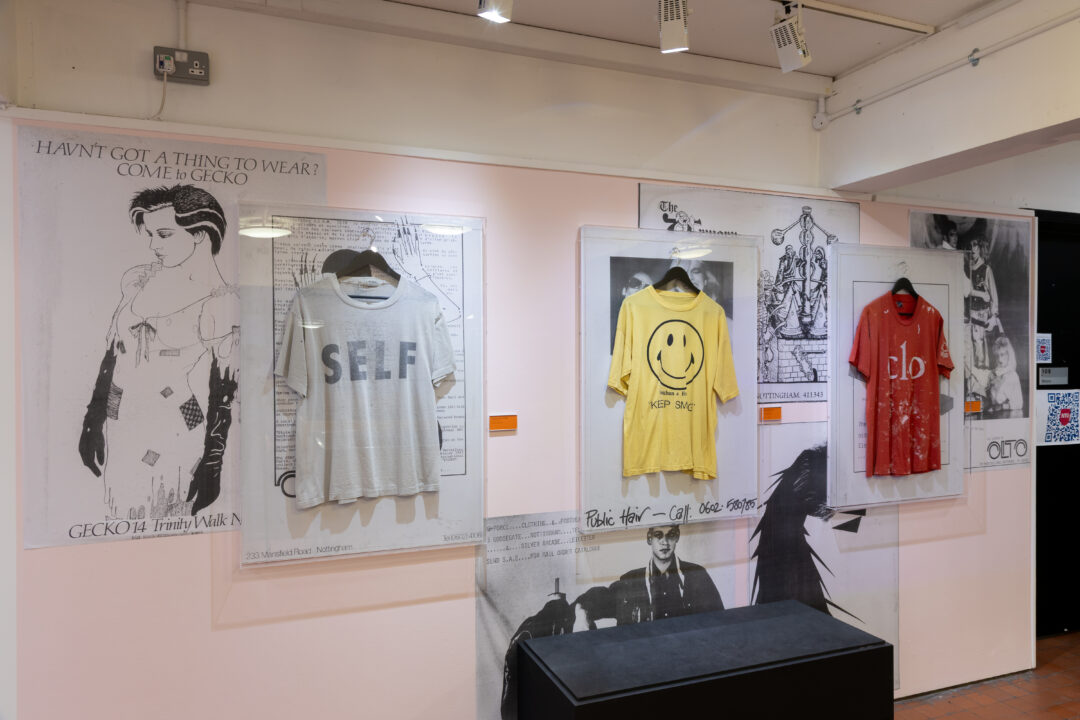
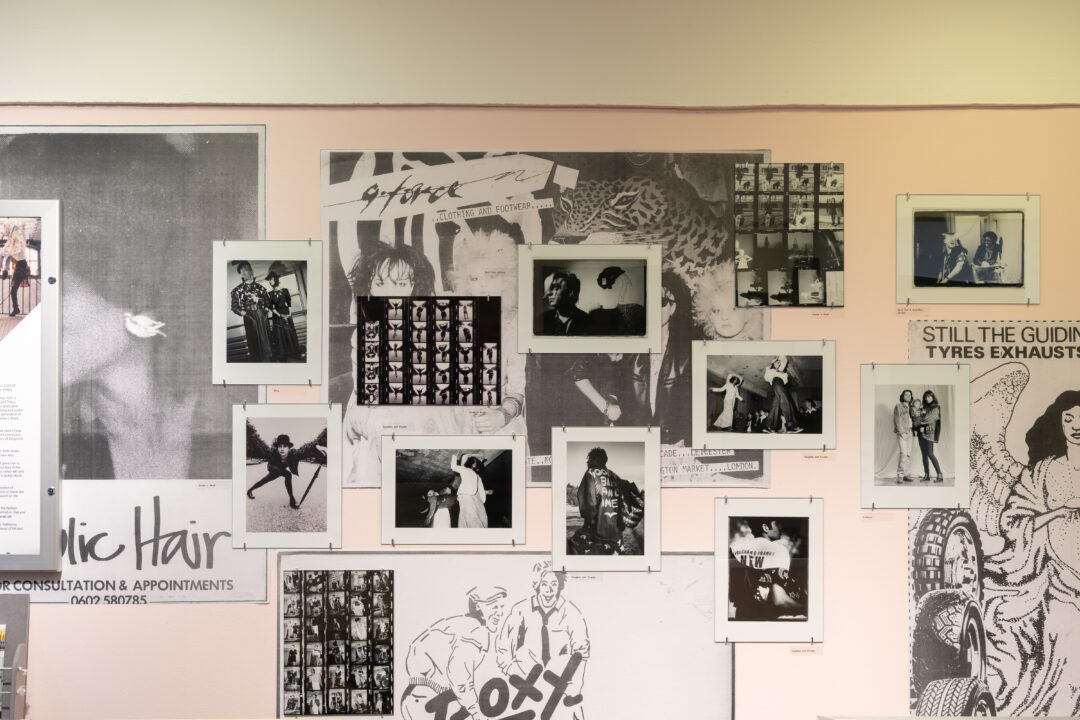

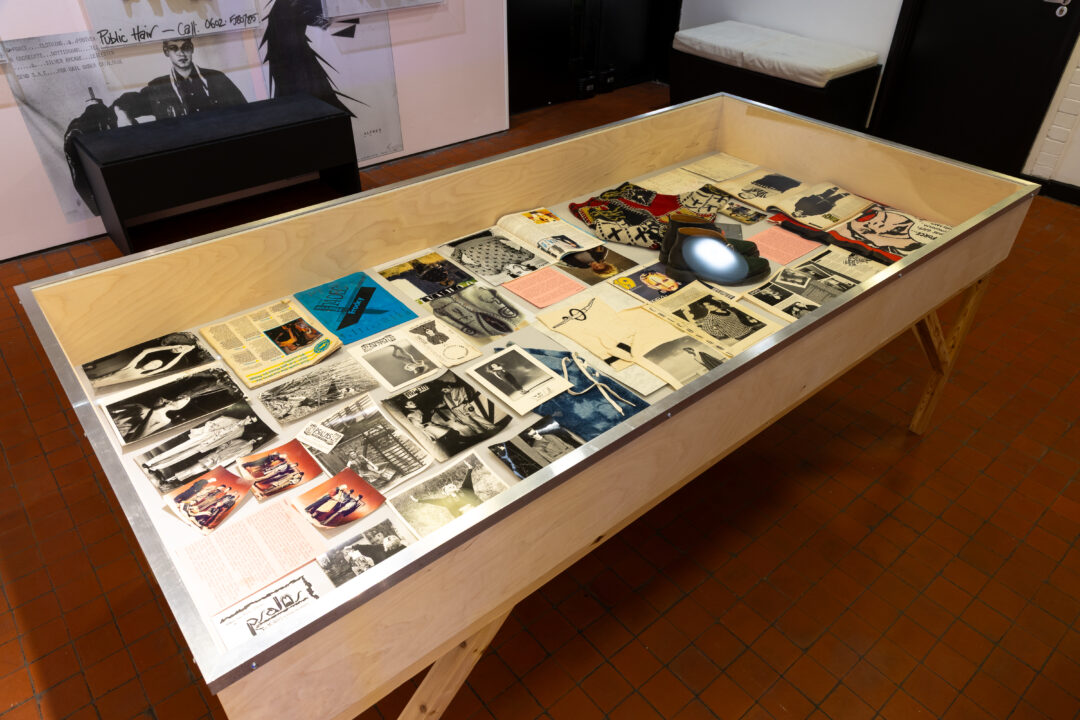
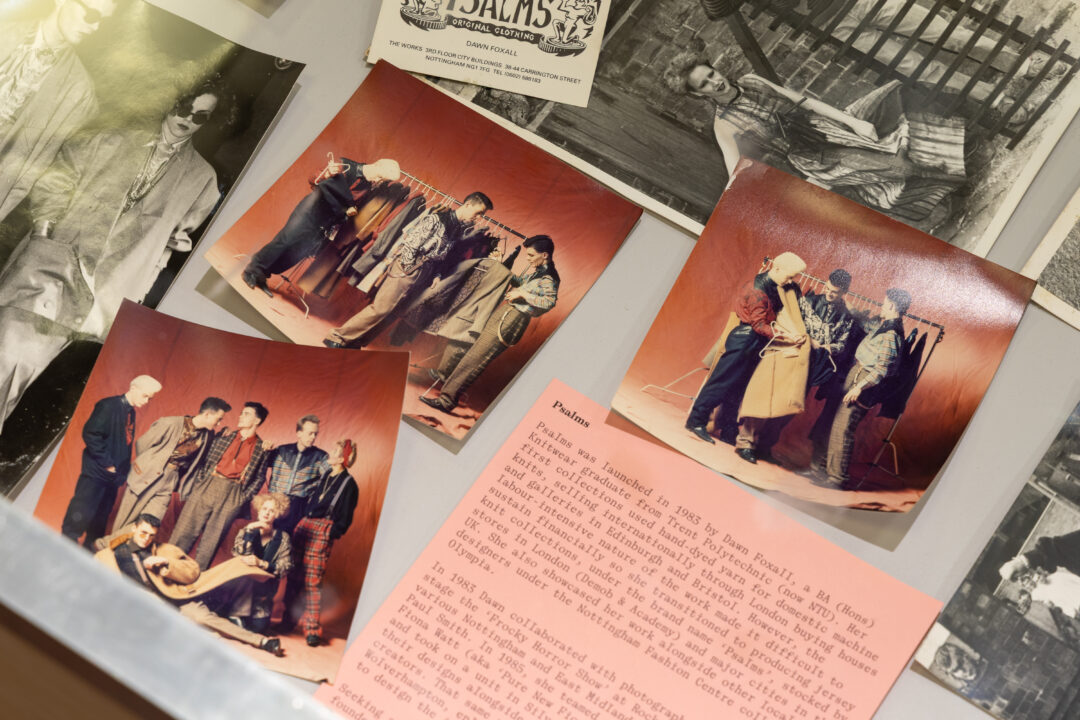
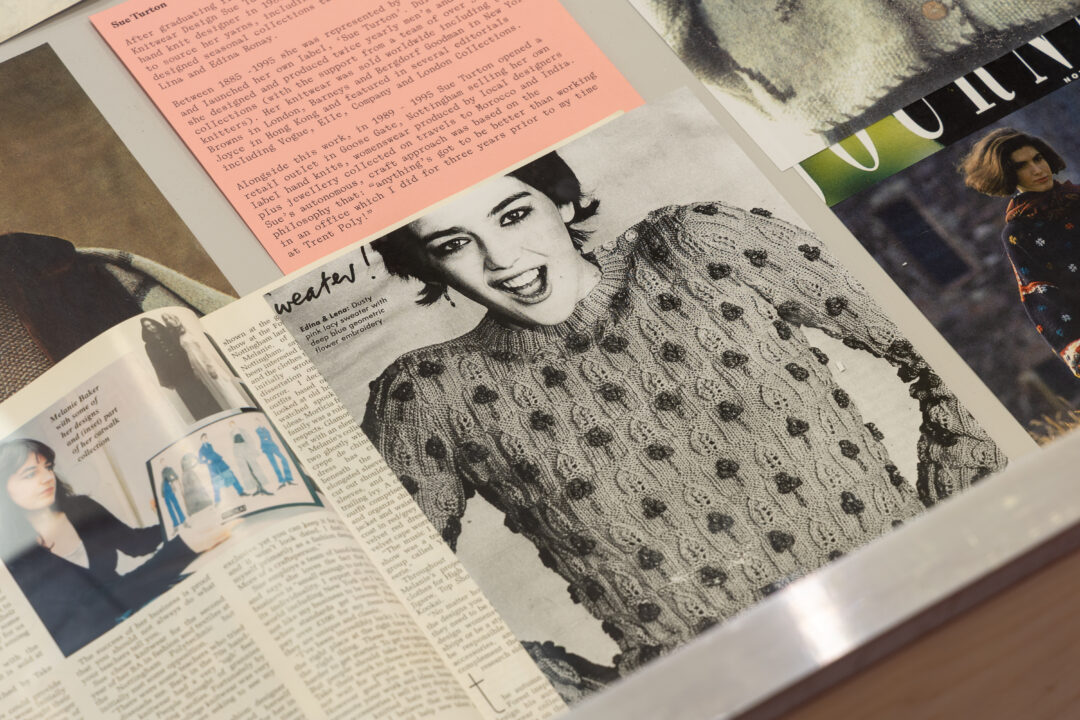
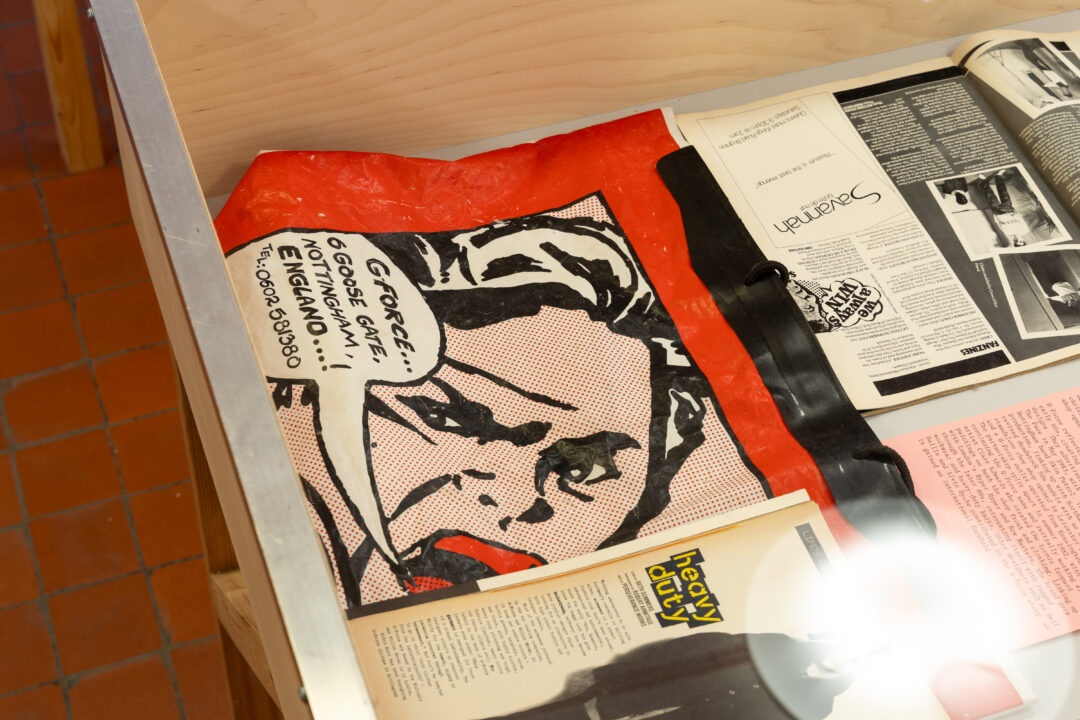
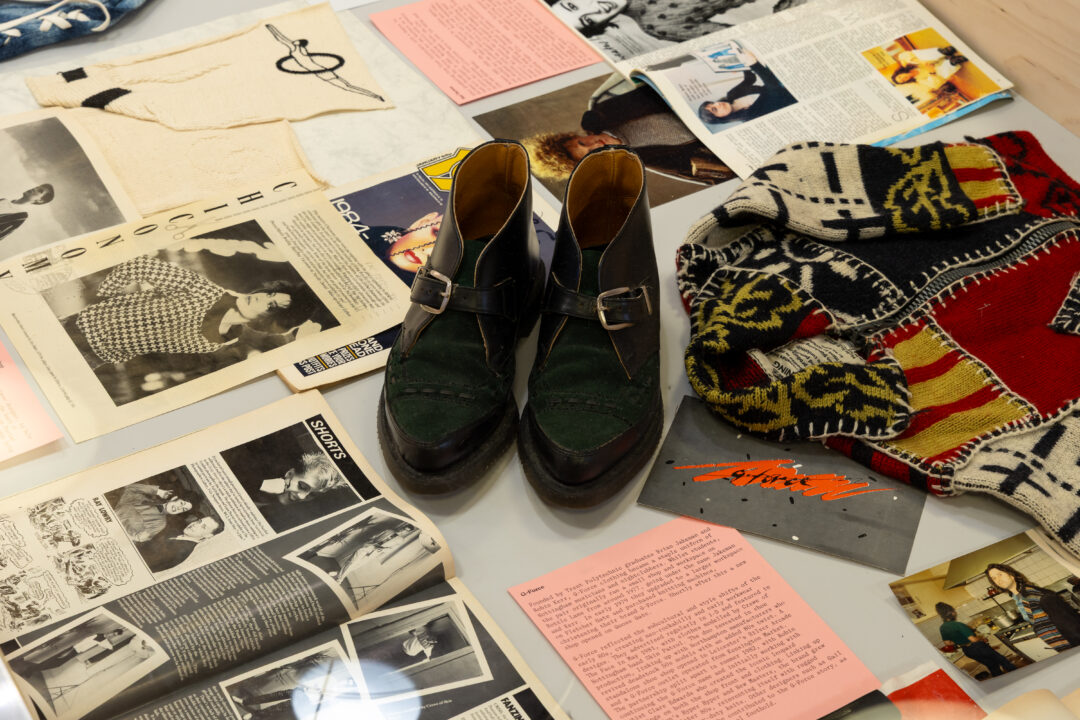
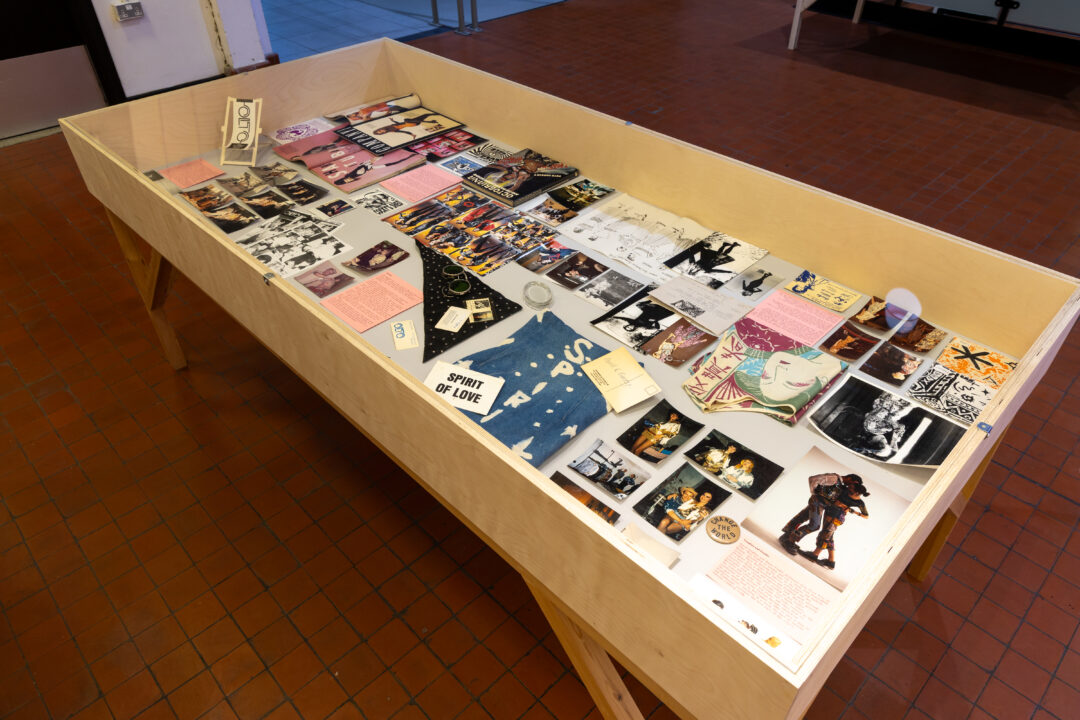
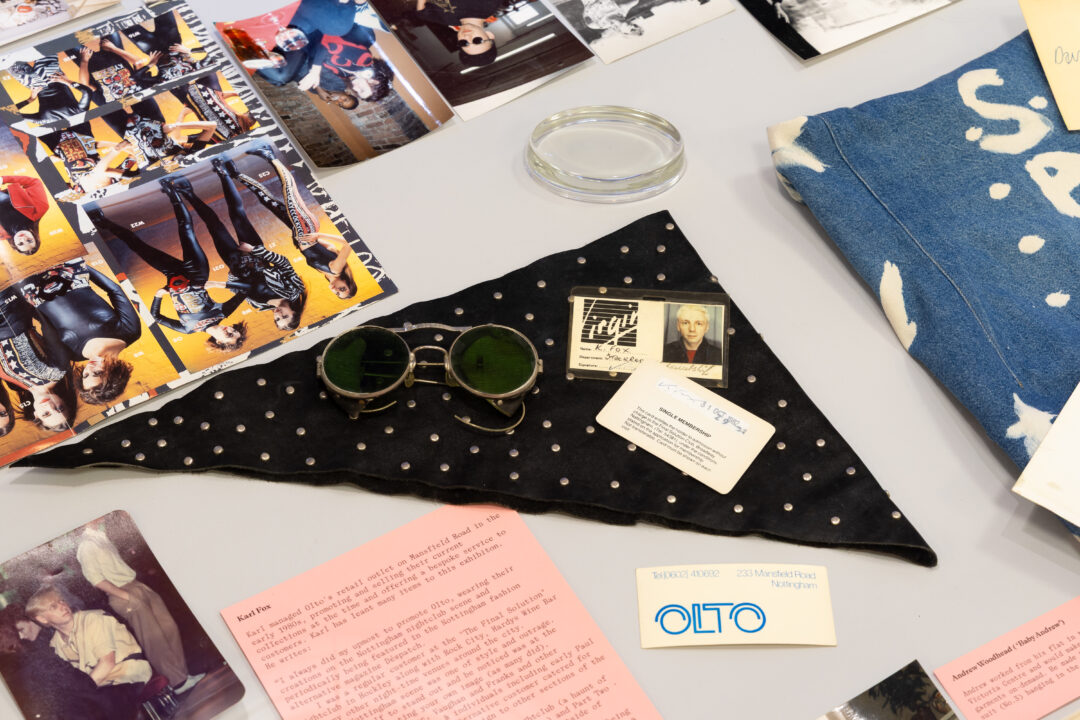
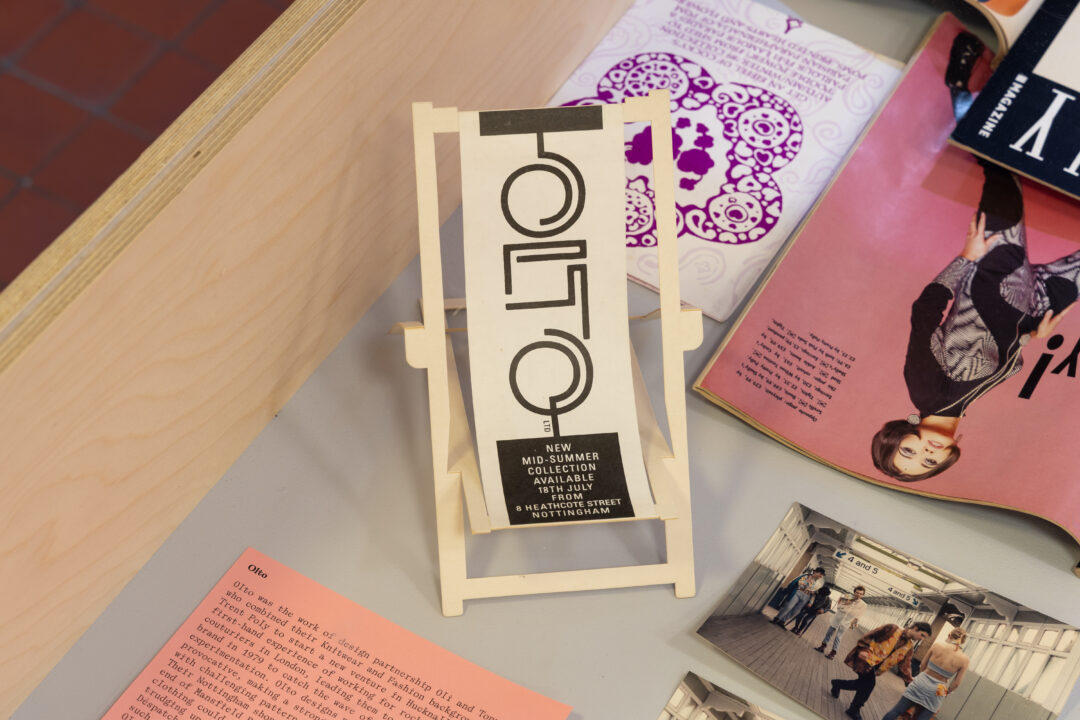


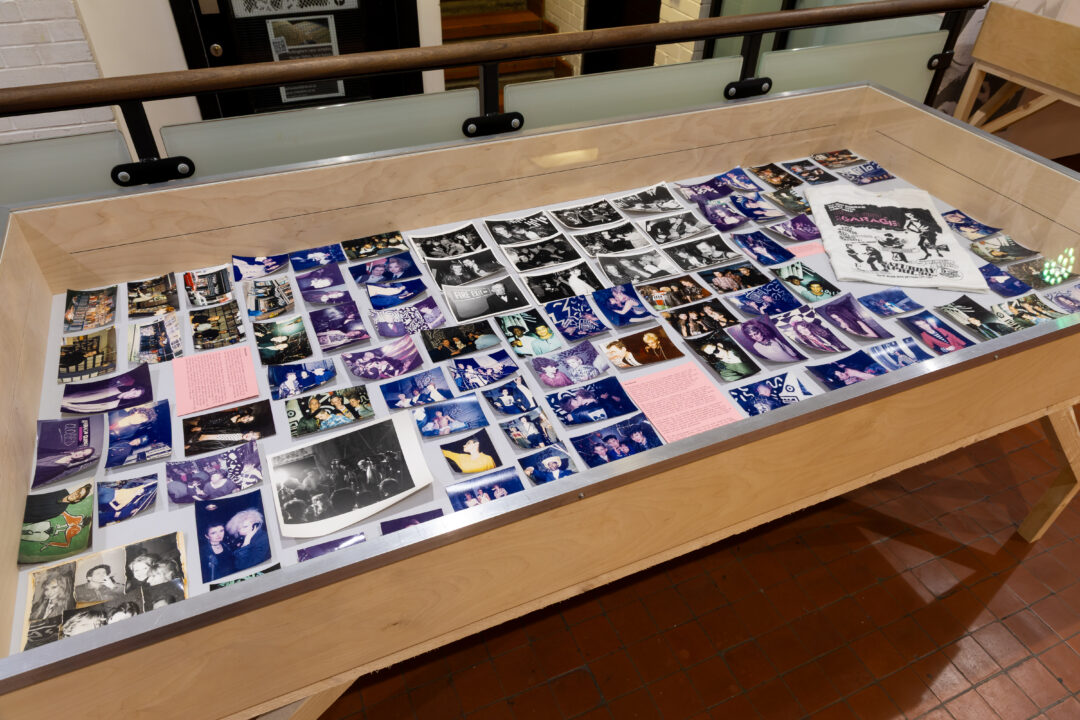

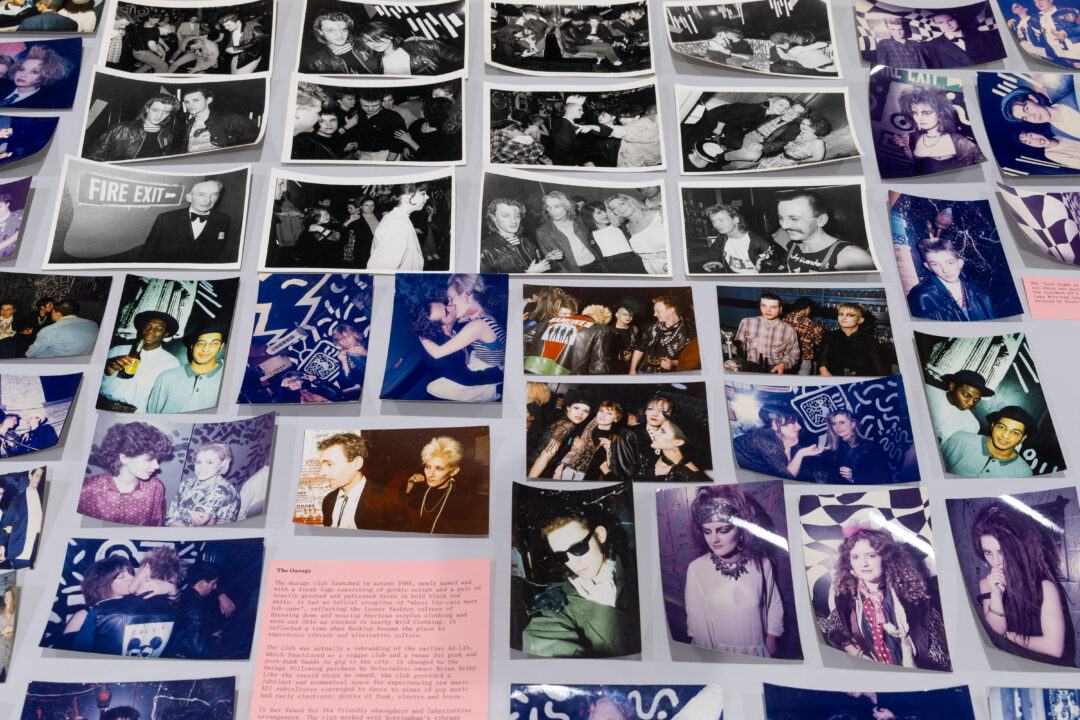
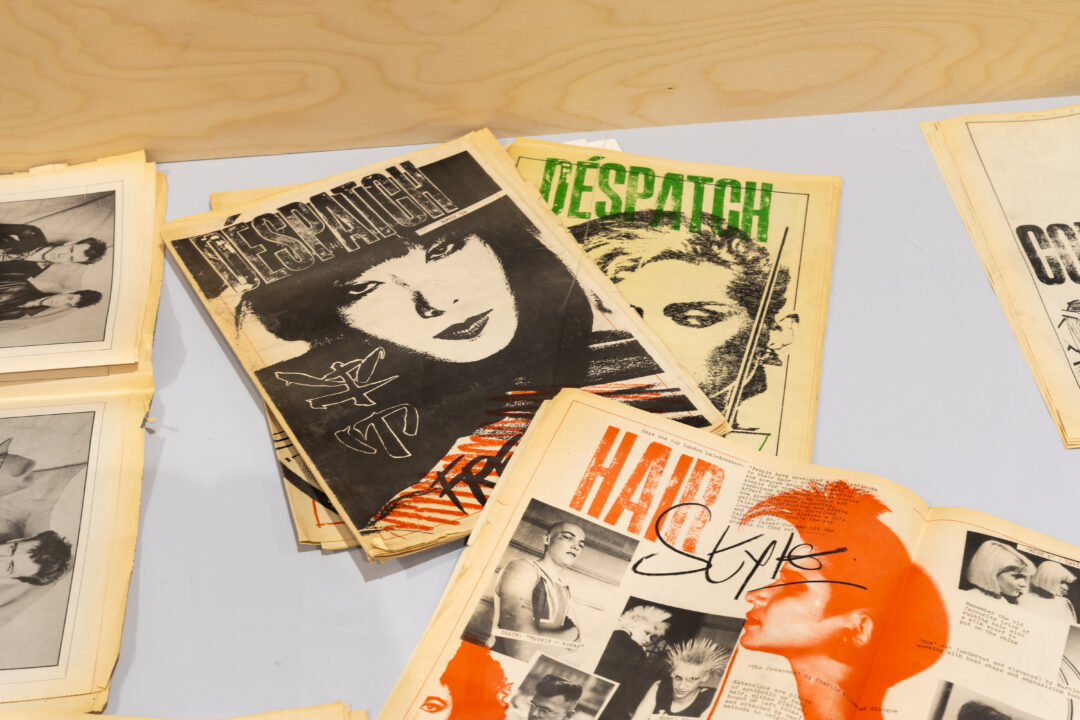
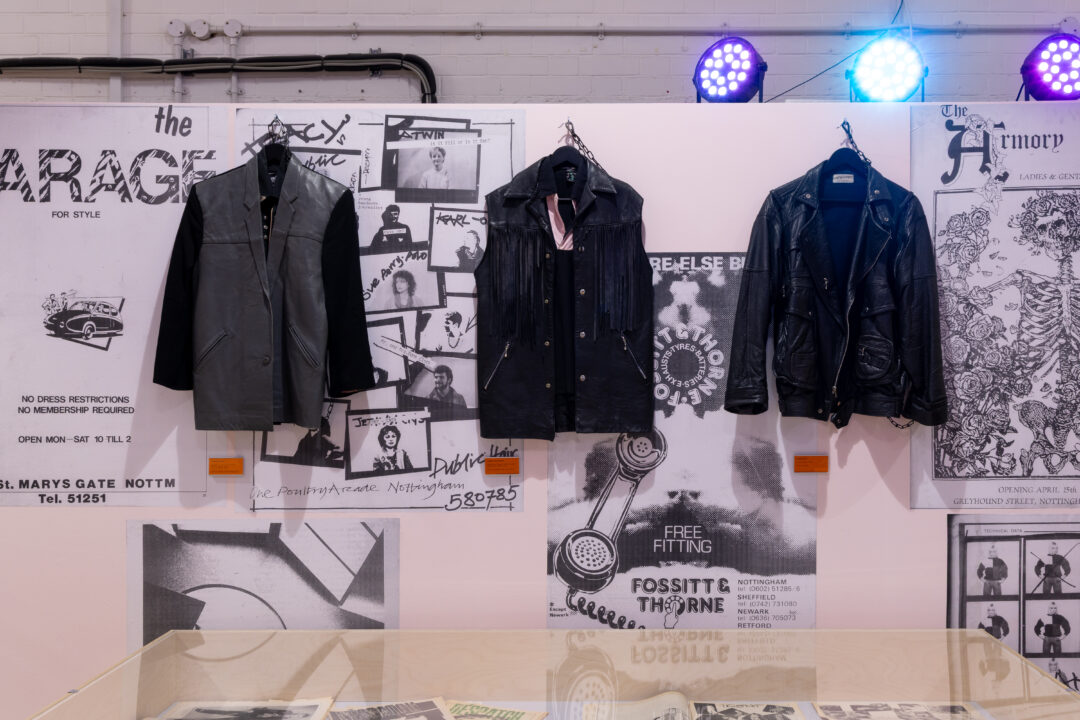
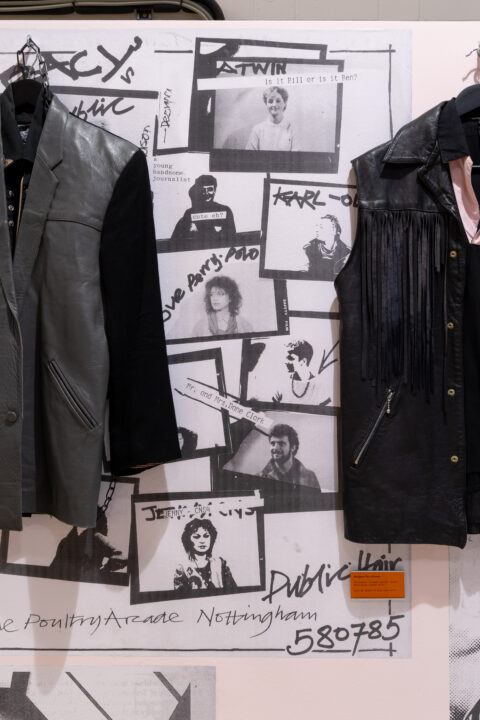

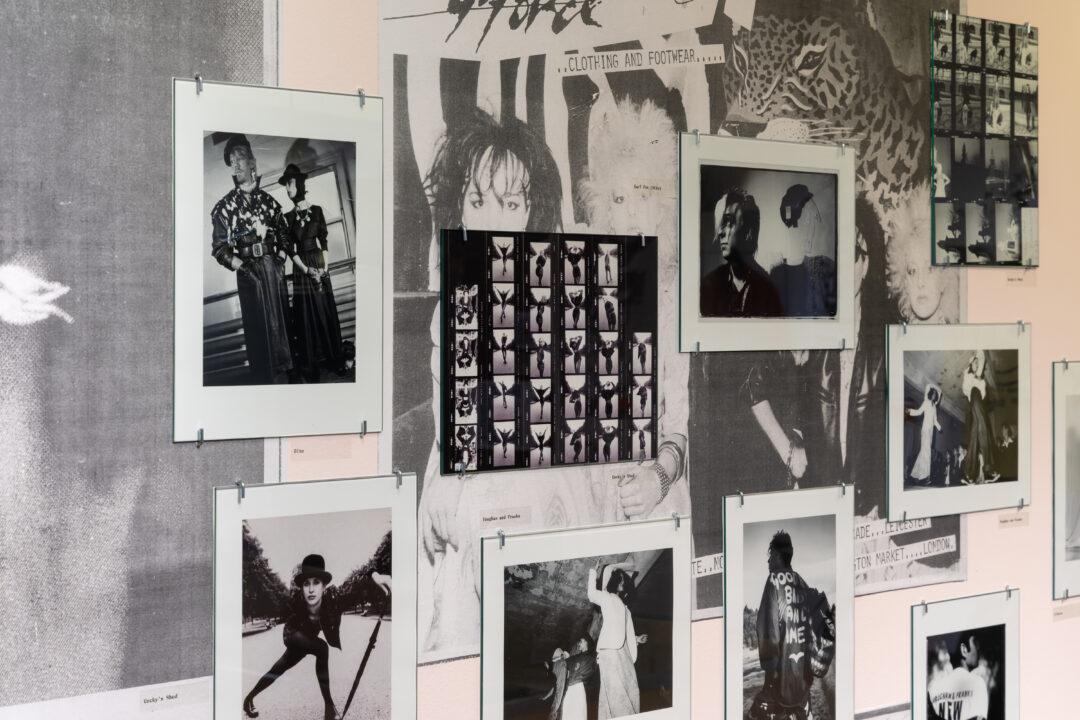
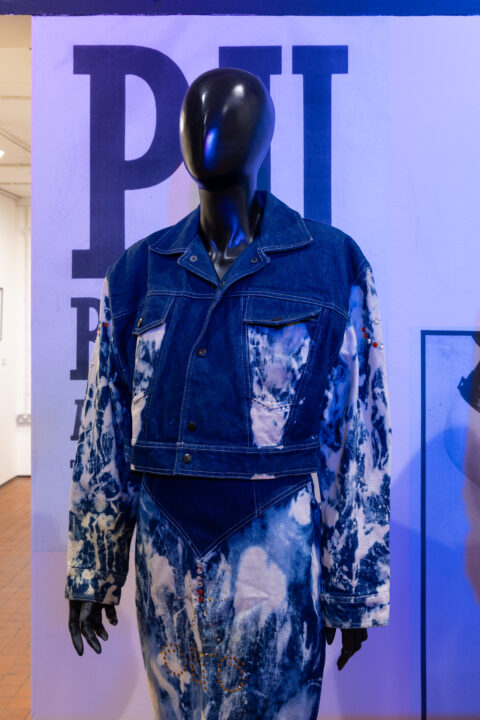
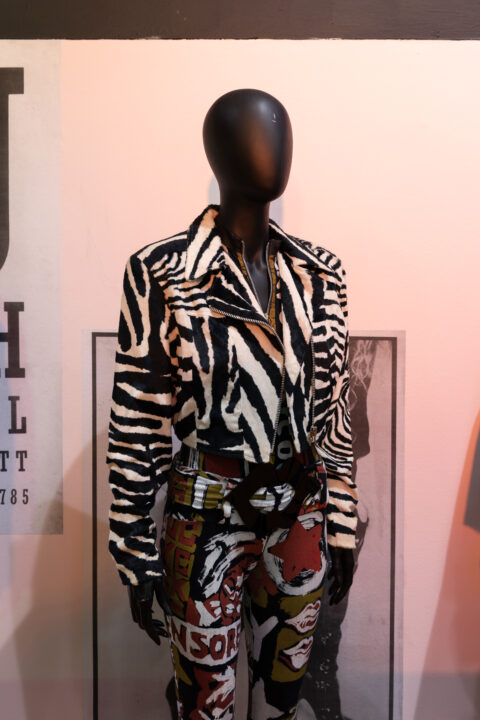
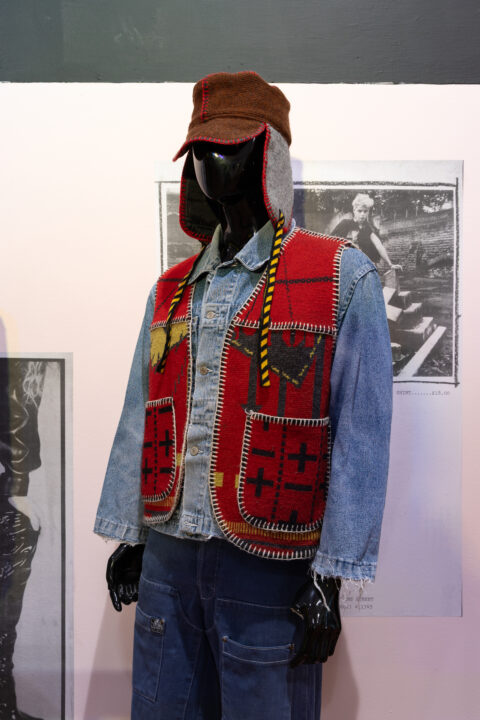
Ian Trowell’s essays
Press
Image: ‘Clockwork Orange’ collection by Olto (now One-BC). Photo by Paul Edmondson, circa 1984.
As part of our current Vitrines exhibition, Art [School] Histories, we have been collecting materials from former Nottingham School of Art and Design students and staff that reflect the more candid and informal moments during their time here. Below are a selection of these submissions – see the full set on the specially constructed noticeboard next to the Vitrines, just outside the gallery entrance.
























With thanks to Claire Simpson, Daisy Hayward, Diana Pasek-Atkinson, Lis Evans, Rebecca Efstatiou, Alex Jovcic-Sas, and Giorgio Sadotti. If you have any images or memories you’d like to submit, please email boningtongallery@ntu.ac.uk
To accompany The Art Schools of the East Midlands exhibition in our Gallery by John Beck and Matthew Cornford, our Vitrines and Foyer will feature historical materials relating to the history of Nottingham School of Art & Design.
The School was first established in 1843, and counts painter Dame Laura Knight, Desperate Dan creator Dudley D. Watkins, BAFTA nominated director Jonathan Glazer, comedian Matt Berry and visual artist Hetain Patel amongst its notable alumni.
Come along to discover photographs, artefacts, aural histories, press cuttings and more from the art school’s rich 180-year history. Uncover some of the lesser known histories, and hear memories from those who worked and studied here over the years.
This exhibition has been assisted by Researcher & Assistant Curator: Lee Chih Han, Art Museum and Gallery Studies placement from University of Leicester.
























Photographs by Jules Lister
Come along to our launch night on Thursday 21 September, 6 pm – 8 pm for a first look round, alongside Art Schools of the East Midlands in the Gallery.